Andy Paul's Blog, page 8
December 11, 2019
The Sales Leader’s 5 Step Guide to Better Sales Hiring

Studies have found that the cost of a bad
sales hire is four to seven times the annual salary of the position. Ouch!
You can’t afford this. Nobody can. Yet, time
and time again, companies all over the world, large and small, hire the wrong
people for their sales organizations.
How do we know this? Because of industry
research from companies like CSO Insights that consistently find that only half
of all sales professionals achieve quota each year in B2B sales. There are a
lot of factors that go into determining whether a sales rep will hit quota.
And, typically, they all start with the person
tasked with recruiting and hiring sales reps.
The typical sales leader usually has their
list of personal qualities a candidate needs to have boiled down to just a few
mythical stereotypes: Hunter, Closer,
Extrovert, & Aggressive
That’s it. Those are, by and large, the
qualities that too many sales managers will look for in a candidate. The
question is, are these qualities that will help your customers make the
purchase decisions to buy from you? Of course they’re not.
A much better set of qualities that enable a
salesperson to help their prospects make better purchase decisions are: Curiosity, Empathy, Problem-solving skills,
& Responsiveness.
The question is: how do hire people that
embody those necessary characteristics?
In baseball, a coach will often tell his
players to never swing at the first pitch. The idea is that you can learn
something about the tendencies and capabilities of the pitcher if you just
watch the first pitch come across the plate.
The same can be said for hiring salespeople.
Don’t swing at the first pitch. Don’t hire the first person you interview. No
matter how much you like them.
Too often, a CEO or Sales Manager will “swing
at the first pitch” by defaulting to one of two failure modes.
The “Love at First Sight” failure mode. This
is where the hiring sales leader finds the process of hiring a sales person so
unpleasant and taxing that they will hire the first warm body who walks through
the door that can string together two complete sentences. (I’m kidding. Sort
of.)
The “Style over Substance” failure mode. This
is where the hiring manager is swayed by first impressions of the candidates
that are attractive, well-dressed and have a pleasant personal demeanor. These
are the slick sales professionals who make the hiring managers feel good about
themselves. (To their later eternal regret.)
Hiring the right person for the job takes time
and a commitment to a process that will help protect you from making some of
the obvious, and avoidable, mistakes. There are NO shortcuts.
How can you help yourself to become better at
hiring the ideal sales candidate? Here are 5 easy steps you can implement
immediately.

1. Write an accurate, honest and detailed Hiring ICP (Ideal Candidate Profile.)
The temptation for many hiring managers is to
write an overly broad high-level job description. They do this in an effort
hedge their risks, figuring that a general job description will entice a higher
level of talent, or attract a broader pool of applicants.
It’s a bit ironic that this occurs so
frequently, because as a sales manager you’re probably coaching your new
business sales reps to only call on potential prospects that fit a tightly
defined ideal customer profile (ICP.)
Otherwise you end up with a pipeline of “prospects” that aren’t a fit
for your product or service and are taking valuable sales time away from
prospects that will buy from you.
You should do the same thing with your hiring.
Your chances of hiring success will increase the more narrowly focused you are
on the pool of candidates that match your Ideal Candidate Profile.
Your Hiring ICP should have two parts: a job
description and a detailed definition of responsibilities. In fact, think of
the Hiring ICP like a sales proposal that you would write for a prospect. The
Job Description is the Executive Summary. The Definition of Responsibilities is
like the detailed Statement of Work that provides a detailed specification of
the daily responsibilities, expectations and objectives for the position you
are trying to fill.
You want to hire candidates with relevant and
applicable expertise, industry knowledge, and successful sales experience. To
attract and hire those candidates you need to have your Hiring ICP in place
before you begin recruiting for the role.

2. Perform in-depth evaluations of multiple qualified candidates
The reason why you don’t want to swing at the
first pitch is that you are waiting for the pitcher to throw the ball across
the fat part of the plate so you can hit it out of the park. Same with hiring.
You must evaluate more than one qualified
candidate for every job opening. No matter how much you like the first person
you interview you have to conduct assessments, in-depth interviews and
reference checks of at least two other candidates before you make a hiring
decision.
3rd party hiring assessments are
great screening tools for candidates. There are many companies that offer these
tools. Investigate which assessment tool will help you screen candidates for the
specific qualities that you defined in your Hiring ICP. Once you identify the
tool that works best for you, use it on every candidate and track how the
candidates you hired using the assessment are performing on the job. This will
help you correlate assessment results to sales results in order to improve your
hiring in the future.
Use fact-based questioning during interviews
to verify the claims on each resume. Instead of asking opinion based questions,
ask direct questions that require the candidate to substantiate every factual
claim on their resume. For instance, if they said that they achieved 120% of
their quota last year, ask them to break that down for you. What were the deals
that they closed, who were the customers, what product and service did they
sell, how many people were on the account team for that deal, what was the
dollar size of the deals, and who had what responsibilities? In other words,
you want to be able to do the math for yourself to see if it all adds up. If a
candidate has lied or stretched the truth, you disqualify them. It’s that
simple.
References should be a source of important
data that are factored into the hiring decision. However, here’s a key point,
reference checks are not meant to be a validation of a decision you’ve already
made. Too often, hiring managers will interview candidates, decide who they
want to hire, and then check that one person’s references. This is called
backwards hiring.
You have to conduct reference checks BEFORE
you make the hiring decision. Before you fall in love with a particular
candidate. Yes, I know that your hiring decision is contingent on a successful
reference check. However, hiring managers are all too willing to dismiss bad
input from reference checks if they are advocating for a particular candidate.
Hiring is a risky business in the best of
circumstances. But sales is one of the few professions where past performance
can be an objective and transparent measure of a candidate’s ability and future
capabilities. Take advantage of this built-in advantage and stop hiring
backwards.
Do your reference checks first, & make
your decision second.

3. Have your entire management team interview candidates.
Sales interacts with nearly every department
in an organization, and it must work closely with marketing, customer success
and others. Therefore, it’s important for people in those departments to be
exposed to and express their opinions about the people you’re hiring. They may
understand better than you if the person has the right mindset, aptitude and
skills to collaborate with other departments to achieve a common goal.
You also want to take advantage of the “wisdom
of crowds” factor. Research shows that more inputs from multiple sources can
help people make better decisions. Gathering multiple diverse perspectives on
an individual candidate you want to hire will help you to better evaluate their
fit for your sales team.
If you’re reluctant to have your peers or
supervisor meet your favorite candidate, you have a problem. (Just like that
time you hesitated to take your tattooed boyfriend or girlfriend home to meet
Mom.) Selling is a team sport, and hiring should be a team sport as well. Sales
touches every part of your organization, and everyone that works with sales
should have input into the hiring of a salesperson.

4. Test skills and verify all résumé information.
As mentioned earlier, hiring the wrong sales
person is very costly. Therefore, it’s essential that you take every step
possible to reduce the risk of making a bad hire. It’s important to separate
“reduce the risk” from “eliminate the risk.”
It’s not possible to eliminate the risk. After all, we’re dealing with
complex, unpredictable human beings, not machines.
First, if there are specific skills or
capabilities defined in your Hiring ICP then you must test the candidates to
understand to what degree they possess them. For instance, if the job requires
technical knowledge, give them a short technical test. If they must make
frequent customer presentations, then make them give you a presentation as part
of the interview.
Second, you need salespeople who are open to
receiving and acting upon coaching. Be
sure to set up a coaching opportunity as part of the interview process. For
instance, have the candidate give a short presentation to you. Provide them
coaching about the presentation they made and offer suggestions about how they
could improve it. Then ask them to give you the presentation again and see if
they incorporated any of the coaching tips into it.
Testing and verifying skills will reduce the
probability of making a wrong hire. It will save you the cost of interviewing
another set of candidates, and can potentially save you the cost of losing
customers. Testing your candidates’ knowledge and skills is absolutely
essential.

5. Recruit Internally
The best place to recruit new salespeople is
inside your own company.
Who knows your products and processes better
than the people already working there? If your company is in a technical field,
recruit technically capable salespeople from within your engineering and
development departments. Look for those engineers that have exhibited a special
knack for customer support, or that one engineer that every salesperson wants
to use as a technical resource on their sales calls. Your future best
salespeople already work for you; they just may not be salespeople.
Hiring salespeople doesn’t have to be a
necessary evil. It should be a productive process to build a team that will
build your company’s top and bottom lines, if you go about it the right way. By
taking a few extra steps and hiring the right people, the right way, you can
take your sales team from average to amazing.
The post The Sales Leader’s 5 Step Guide to Better Sales Hiring appeared first on Andy Paul.
December 10, 2019
The Killer Sales Plan: How To Build An Effective Plan To Smash Your Sales Goals
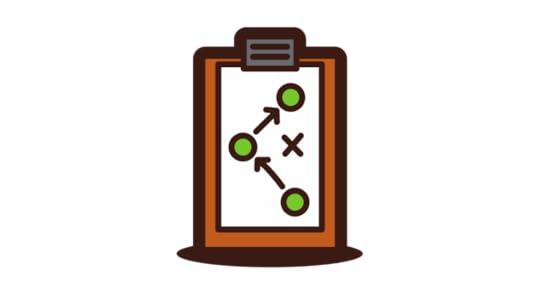
Quick Links
The Killer Sales Plan The 3 Ground Rules for Your Sales Plan The 6 Simple Steps to Develop Your Killer Sales Plan
The Problem:
The biggest cause of poor sales productivity is a lack of focus by sales people on the sales activities that can make a difference and “move the needle.”
Sales people need to be able to quickly identify the main focus of their selling and align their strategies and sales actions accordingly.
Who Is This For:
Sales Type:
Inside Outside Hybrid B2BB2C
Product Type:
Product Service Professional Service
Channel Type:
Direct Indirect (3rd party) Retail
Your Company Size:
Large Medium Small
Your Role:
CEO/Business Owner C-Level ExecutiveSales Manager Salesperson Consultant
Specific Goals and Objectives:
With this guide, the sales reader will be able to develop tightly defined sales plans that increase sales focus, enhance a salesperson’s use of their selling time, reduce ramp-up time on new assignments or new territories and improve overall sales productivity.
The Killer Sales Plan
A good plan, violently executed now, is better than a perfect plan next week.
George S. Patton

There Is No Such Thing as Perfect Sales Plan
George S. Patton arguably was one of America’s most successful field commanders in World War II.
He didn’t believe that a “perfect plan” could exist in combat because there were just too many variables at play that he could not anticipate or control.
However, what he could control was the basic performance of his soldiers as they executed his plans and strategies in some of the most decisive battles in North Africa and Europe.
Similarly, you do not need a perfect plan to achieve your sales
goals. However, you do need a plan. In fact, you will in all likelihood need
more than one plan before you hit your big goals (for reasons I explain below.)
When You Need a Sales Plan
There are multiple occasions that give rise to the need for a sales plan. Sales planning is too often thought of as just an activity that you do at the start of a new sales year.
Too often managers and salespeople are guilty of writing detailed sales plans in preparation for a sales kickoff meeting and then sticking them in a drawer and never referring to them.
Sales planning is not something you do for show; you do it for the dough.
When do you need a sales plan? Here are a few examples:
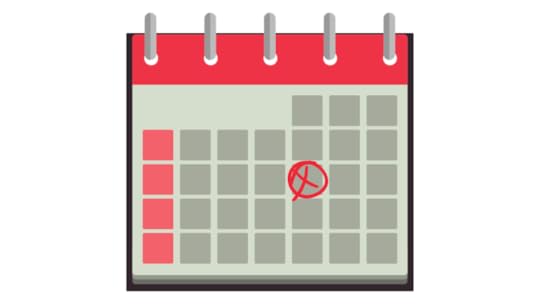
At the start of a new sales year;At the start of every quarter;When you start a new sales job;When you take over a new territory;When you start a new company;When you assume a sales management role;When you launch a new product or service
The Reasons You Need a Sales Plan
The purpose of a sales plan is to help sales people achieve the
following:
Develop a detailed understanding of their sales goals;
Define the required plan objectives, and establish a set of practical strategies and tactics that they can easily implement to achieve their goals;
Identify the risks and dependencies in the plan that could be roadblocks to your success.
The Essential Elements of a Killer Sales Plan
A pragmatic assessment of your strengths and weaknesses. You have to be brutally honest with yourself about the strengths and weaknesses in your sales game. The strategies and tactics you incorporate into your plan have to build on your strengths. Don’t make plans that are dependent on you mastering new skills or knowledge in a short period of time.
Logical, common sense strategies and tactics. Don’t be afraid to try new strategies. Just be certain that they are grounded in common sense. If your normal close ratio is 10%, don’t build your plan on strategies that assume that your close ration will be 30%. That just wouldn’t be logical.
Benchmarks for disciplined, consistent, and proactive execution each and every day. Regardless of the specific tactics that you will employ in your plan, they have to be based on an unshakeable foundation of certain proactive sales activities that will happen each and every day. This means setting benchmarks for the number of calls that you will make each day; how many emails you will send each day; how many webinars you will hold, how quickly you will respond to leads; how quickly you will return all phone calls. And so on. (add to the spreadsheet)
The 3 Ground Rules for Your Sales Plan

Here are 3 simple ground rules that have to be incorporated into
your Killer Sales Plan.
1. Your plan
period can’t exceed 90 days.
Plan in small chunks of time.
Why?
Because life happens and everything changes.
You can’t forecast everything that will happen to you and your prospects during a 12 month period, let along for the next 90 days.
Too many variables come into play. You know that the sales actions you take next month will be influenced by the actions you take this month. Your schedule and daily activities will always be influenced by your success or failures during the current plan period.
For instance, if you are assigning your salespeople the task of
creating their sales plans for the next sales year, do not have them map out
detailed action plans for the entire year. Focus on just the next 90 day
period.
2. Every plan needs milestones to measure your progress.
How long do you stick with a plan before you decide if it is working?
You need to collect data about how well you are executing your plan. Creating milestones gives you the opportunity to regularly determine if you are on track or not to achieve your goals and make the necessary adjustments.
3. Your plan has to be shared with your manager(s) and your peers.
Sales is a team sport not just an individual vocation. Share your goals, your strategies and your planned tactics with managers and peers to gather feedback. It is a priceless way to learn new ideas that could help improve your performance.
In addition, by sharing your plan you are asking people to hold you accountable for the results. There is nothing like shared accountability to provide motivation to succeed.
The 6 Simple Steps to Develop Your Killer Sales Plan
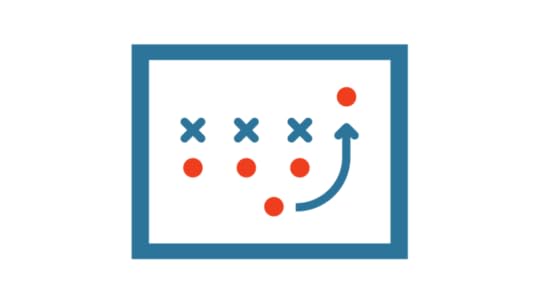
Here are 6 simple steps to develop “The Killer Sales
Plan”; a rock-solid plan that you can easily execute and take to the bank.
Step #1: Define Your High-Level Goals
Establish your personal top-level goals for the plan period.
These goals are not your quotas.
In fact, if you are creating the first quarterly plan for a sales year then you want to complete your own planning PRIOR to having a quota discussion with your manager.
Why?
Because salespeople who plan to quota usually fall short of achieving the mark. Creating a sales plan that is focused on your quota is a defensive gesture.
Creating your own goals and the plan to achieve them is a proactive, aggressive sales strategy every seller should adopt. Meeting or exceeding quota should be the outcome of executing the strategies and tactics in your plan.
Here are some ideas for top-level goals that should be part of your plan:
How much do you want to sell this year?
How many orders will that entail? (And at what average selling price?)
Define your goal(s) to be something that you have confidence you can achieve through practical sales strategies and consistent hard work.
Break big goals into a series of smaller goals
Remember: you can’t do detailed planning for more than 90 days (one calendar quarter) at a time.
Therefore, if you are setting goals for an entire year, you should create interim goals that you will achieve each quarter.
For instance, if your goal is to sell $1 million in product in
the next year, then what are the interim goals you would establish for each
quarter?
Step #2: Define What You Will Sell
Develop Your Plan Objectives for the Plan Period
What are Plan Objectives? Objectives are the lower-level goals
and milestones that you will use to measure your progress toward successfully
achieving your goals.
The best method to develop your Plan Objectives is to build a
“bottom-up” model for achieving your goals that consists of a mix of products,
prospects, and orders.
Start by defining an objective for each of these categories: a)
products; b) prospects; and, c) orders. Then work backwards to calculate the
specific level of sales activities required each day and week to meet your
objectives.
A. Products
What is the mix of products and/or services you need to sell to achieve your Bookings and Revenue goals? Assign a percentage to each product/service you sell and make sure they add up to 100% of each goal.
Translate your product/service percentages into a dollar objective for each product/service type that you sell.
Key Takeaway:
Defining the mix of products and services mix you need to sell will dictate your target market(s) for 2014 and provide a defined focus for your prospecting and business development activities.
B. Prospects
What will be your conversion rate of leads into qualified prospects? What will be your conversion rate of qualified prospects into orders?
Based on your lead conversion rate, how many new leads will you need over each quarter, month, and week to achieve your goals?
Based on your prospect conversion rate, how many active prospects will you need at any one time over the plan period?
How many active prospects will you need at any one time to meet your quarterly, monthly, and weekly goals?
Key Takeaway:
Defining conversion ratios and prospecting metrics will give you clear benchmarks during the sales year to evaluate the effectiveness of your sales processes and determine what improvements or adjustments, if any, you must make to achieve your goals.
These ratios and metrics also provide clarity regarding the quantity and quality of prospecting you must perform to develop a robust pipeline of prospects.
If an insufficient number of leads are supplied by your company’s marketing efforts, then what prospecting activities will you need to do on your own to ensure a consistent, predictable flow of qualified prospects?
C. Orders
What will be your average order size (for each product/service type in your plan) in dollars?
Based on your average order size, how many orders will you need to close in the year (for each product/service type in your plan) in order to achieve your revenue goals?
Allocate these orders over each quarter and month of the year. If you’re in a high-transaction-volume business, then break down your orders by week or day.
Key Takeaway:
Defines milestones for the results you should be seeing from your sales activities.
For example, if your pipeline or funnel is healthy but you are experiencing a shortfall in your orders, this should trigger an assessment of your bottom-of-the-funnel sales processes.
Step #3: Define How You Will Sell
Create Execution
Strategies and Action Items
Once you have defined your goals, and have developed a set of detailed objectives, you have to create the Strategies and Action Items that you will execute on a daily basis to make them a reality.
Create at least 2 strategies for every objective that you developed in Step 2. And, create at least 4 action items for every strategy.
Here is an important reminder.
Only develop detailed Strategies and Action Items for the first calendar quarter of your plan period.
It is impossible to do detailed daily activity planning more than 90 days in advance because too many things can, and will, change over that period of time. (See Step 6 below about planning for future quarters.)
Here is a quick example of a strategy and its associated action
items for a plan objective, (as you will have developed in Step 2):
Objective: Develop 5 new qualified local prospects per month.
Strategy 1:
Network with local business owners and C-level executives to build awareness of my services and develop sales leads (and qualified prospects).
Action Item 1.1:
Identify all local weekly and monthly business networking events.
Action Item 1.2:
Attend 2 business networking events per week.
Action Item 1.3:
Obtain 3 referral introductions to potential prospects per week.
Action Item 1.4:
Make 5 new connections on LinkedIn per week
Strategy 2:
Do proactive lead follow-up and outbound calling to schedule 5 new prospect meetings per week.
Action Item 2.1:
Develop targeted list of local business owners and C-level executives.
Action Item 2.2:
Implement a 9 by 9 out-bound calling program.
Action Item 2.3:
Send 3 LinkedIn Inmails per week.
Action Item 2.4:
Follow-up 100% of all new sales leads within 4 hours.
Step #4: Identify Rash Risks & Critical Dependencies
Take calculated risks. That is quite different than being rash.
George S Patton.
Eliminate Rash Risks
It is important to assess what the risks are to the achievement of your plan. Once you have broken down all of your objectives into distinct strategies and action items you can then easily identify the risks to your success.
For instance, if you calculate that the time and resources required to successfully execute all of your Strategies and Action Items for each plan objective will require you to work 20 hours a day, 7 days a week, then going ahead with your plan would constitute a “rash risk.” And you would need to rethink your objectives and strategies.
Identify Critical
Dependencies
Answer this question: Is your ability to achieve your goals and
objectives dependent on factors beyond your control? If the answer is yes, then
you need to modify your plan to eliminate those dependencies.
For example, if you factored into your revenue goals an assumption that your company would release a hot new product in Q2 and that it would be available for shipment to customers by the end of May, then that would be a critical dependency.
If the product release were delayed then your ability to meet your goals would be compromised. And that’s a problem for you. You can’t blame falling short of your goals on anyone else.
Or, if you’re a sales manager, and you developed a set of strategies and action items that were based on the assumption that you would receive budget approval to hire a certain number of additional salespeople in Q1 and then your manager said that all new hires would be deferred until Q2, then this too would represent a critical dependency.
Use this step to identify and eliminate critical dependencies in your plan that will prevent you from achieving your goals and objectives,
Step #5: Create Your Benchmarks
The single most important thing to remember about any plan is that its ultimate success or failure depends on execution more than on the creativity of the plan.
The key to your success is the consistent, disciplined execution of your strategies and action items.
Don’t finish the plan and then file it away. It is your roadmap to success. Stay focused on your plan. Make key adjustments as required to keep yourself on track. But stay focused. (Did I mention that before?) And go close a lot of orders.
Step #6: Review and Update Your Plan Quarterly
As discussed in Step #1 above, Strategies and Action Items should initially be developed just for one calendar quarter at a time.
At the end of each quarter, the strategies and action items must be updated and/or revised for the following quarter based on your year-to-date achievement.
If you’re knocking it out of the park, then stay the course and do more of what you’ve been doing. If you’re lagging behind your goals, then you’ll need to analyze why your strategies and tactics aren’t working as expected and revise or replace them.
The post The Killer Sales Plan: How To Build An Effective Plan To Smash Your Sales Goals appeared first on Andy Paul.
December 9, 2019
How to Talk to Prospects about Value and Price Objections

Quick Look
You can’t talk about value without talking about Price.The value of your product/service exists only in relation to something else: ROIValue is an essential element of effective prospect qualification. You can’t qualify a prospect without getting agreement on the value you are providing.You can’t have a price objection from a truly qualified prospect (because qualifying means to reach agreement on the value you will provide for a certain price).A valid price objection means that you did reach agreement on value (or did an inadequate job of presenting your value).
Value Doesn’t Exist in a Vacuum
I read an article today about how to handle price objections.
In this article the author advises salespeople to avoid talking about the price of the product or service they are selling until after they have “demonstrated the value” of their product or service.
Unfortunately there is a fundamental problem with that advice: You cannot demonstrate value without talking about price.
When you are talking to a prospect about the value of your product what is the measure of that value?
Value is not an abstract concept. It has to be quantifiable to have meaning for your prospect.
And no matter what unit of measure you use for value (cost savings, improved productivity, improved throughput, reduced customer support costs, reduced customer churn, improved customer satisfaction and so on) in the end it must always be reduced to a monetary basis to have any meaning for your prospect or customer.
Value is defined as “…the worth of something in terms of the amount of other things for which it can be exchanged…”
This means that you can express the value of your product or service, for example, in cost savings, improved productivity, or reduced customer churn but it will have no meaning for your prospect or customer unless they can measure the worth of that value in terms of the money they must pay to receive it (otherwise known as an ROI.)
You can tell your prospect that “our customers have experienced an average 19% improvement in revenues in the first 3 years of using our product” but the first thing the customer is going to do is calculate what a 19% improvement in revenues would be worth to them in terms of the investment they must make to realize that value.
But how can they make that necessary calculation if you are withholding pricing information? They can’t.
Your job as a salesperson is first and foremost to provide your prospect with the information they need to make an informed purchase decision. The number one piece of information that your prospects want when they talk to you is pricing.
Keep in mind that before they have ever talked with you, your prospects have spent time online to research your company, your products and services.
When they do talk with you they already have the facts and features of your company and product offerings in hand.
What they want to understand now is the value your products and services will provide them. This understanding cannot be reached without talking about price.
Value is the Core of Qualification
In fact, you really cannot talk value to your prospect without qualifying them. Refer back to the definition of value above.
Value is the “worth of something” (the measurable benefits your prospect will receive from your product or service) expressed “in terms of the amount of other things for which it can be exchanged” (money.) Now, think about what prospect qualification really means.
Qualifying a prospect means that you reach a tentative agreement with your prospect that the value they will receive from your product or service is worth a certain amount of money (i.e. investment) to them.
It doesn’t mean that they are in love with your price but that they agree in principle that the value they will receive from you has a certain monetary value to them.
If you can’t reach this agreement with your prospect you shouldn’t be investing additional sales time with them.
How can you demonstrate your value to your prospect without
talking about price? You can’t. And you shouldn’t try. Value doesn’t exist in
the absence of pricing information.
Recently
I received an email concerning a tele-seminar that was to be held on the
subject of the “dreaded price objection.” For 50 minutes, and about the same
number of dollars, I could learn how to find out “what people really mean when
they say you’re too expensive.” Really? That doesn’t require a lot of
translation.
It has been my experience that when a customer tells me that my product is too expensive that what they usually mean is that my product is just too expensive.
It isn’t an objection.
It is a fact.
Sometimes a customer just can’t afford what you are selling.
Which means that instead of investing your limited selling time in a fruitless attempt to convince the customer to accept your price that you need develop some new prospects that don’t have the same budgetary constraints. But let’s get back to that in minute.
‘I really like your product but your price is too expensive.’
For instance, I recently stopped into a Bentley dealership. I really like the Bentley Continental Supersports. Who wouldn’t want one? But it’s $260,000 price tag has about three too many zeros for my checkbook.
If the Bentley salesperson thought that he was going to navigate the shoals of my price objection and arrive at a signed purchase contract then he would have wasted a significant amount of his limited time with me. In this case I never got the opportunity to voice my ‘price objection’ because the salesperson took one look at the car I drove up in and made himself scarce before I even walked in the door.
I
have four simple rules of thumb about price objections and price qualification
that I have successfully taught to clients and salespeople over the course of
many years.
Qualifying a prospect on price means that you reach a rough agreement with the prospect that your price is proportional to their assessment of your solution’s (product or service) value. In other words, you have reached a preliminary agreement about the value that the prospect will receive for the dollars they are going to pay you. Qualification on price and value doesn’t mean that a prospect is in love with your price. But it does mean you’re in the ballpark and any further discussions of price will become a negotiation, not handling an objection.
A price objection is a valid reason to disqualify a prospect and must take place early in the sales process. A true price objection from your prospect late in the sales cycle means that you misplaced your backbone at the moment of truth and didn’t disqualify them when you had the opportunity. They were never a true prospect for your product or service and you just wasted a lot of time with someone who was never going to buy from you.
Be direct with the prospect about your pricing. Salespeople have developed an unhealthy fear of the price question. They want to put it in a closet somewhere and forget about it. It scares them. Like zombies or movies based on Jane Austen novels. There is no mystery to qualifying on price. The shortest distance between two points is a straight line. Do what you do best. Ask the right questions of the customer to understand their requirements and make sure they are aligned with your features and specs. And then talk price and value based on their requirements.
You can’t have a price objection from a truly qualified prospect. As discussed in #1 above, an intrinsic part of prospect qualification is a rough agreement on price and value. If the prospect is still pushing back on price but wants to move forward with you in their buying process then you should beware. It is possible the buyer has a hidden agenda and is using you in order to advance it. I remember one very large deal I worked on where the prospect kept my company in the deal even though they kept whining about our price. We were confident in our solution so we constructively responded to his pricing concerns. But then it reached a point where it became obvious that he was just using us as a leverage point to negotiate a better deal with our competition. It was a painful lesson learned.
The Myth of The One-Time Discount
Everyone has been in this situation: the end of the month is
fast approaching and you don’t quite have the numbers in hand. It is not panic
time yet, but the big deal you forecasted to close this month has lost momentum
and is threatening to carry over into next month.
Larry, your primary point of contact and chief internal advocate
at your prospect, ABS, Inc., says the deal has gone to Purchasing. Ed, the
Purchasing manager, says the paperwork is making the rounds to get signed off.
You had offered ABS a discount contingent on their placing the order this
month, before 4pm on the 31st. It is now the 30th, the fax machine is still
silent and you haven’t received an email from their purchasing department.
You can hear the tick-tock ticking of the clock on the wall.
Actually, it’s digital, so maybe that is just your blood pressure pulsating in
your temples.
You confer with your boss, Brian. He says “Let’s give them
another 2% if they get the order in by tomorrow.” You excitedly call Larry
at ABS. “Hey, I can give you another 2% off the price. But, only if I
absolutely, positively receive that order before month end, which is at 4pm
tomorrow.” Larry’s excited and says he’ll check with Ed to see if that will
move things along.
Well it does. But not how you would like. And you have just
unleashed a cascade of unintended consequences that will have an enduring
impact on the future profitability of that customer.
First, you just guaranteed the order wouldn’t be received on
time. After you hang up with Larry he calls Ed in Purchasing and brags about
being a hero because he just renegotiated the deal and extracted an extra 2%
discount from you. Ed heaves a deep heavy sigh because now he has to re-do the
purchase docs to reflect the lower price. “I thought they needed the order
by tomorrow.” Larry shrugs and says “Don’t worry. They seem pretty
anxious to get the business. I’m sure they’ll take the order no matter when we
give it to them.”
This leads to the second unintended, but certainly not
unforeseen, consequence in that the order will come in on the 1st or 2nd day of
the next sales month. With the extra 3% and 2% discounts included. My
observations over the years are that approximately 95% of all companies (and
100% of all salespeople) will not contest this extra discount. Here is how the
situation plays out.
You bring the order to your boss. Brian challenges you on the
discount. “Dude, we’re not giving this stuff away. The order didn’t come
in before the end of the month so the discounts are no good. Go back and get
the order for the right amount.” Actually Brian doesn’t really care that
the customer took the discounts, he just doesn’t want to appear weak in the
eyes of his boss, Stan, the VP of Sales. So he is going to send you back to
confront the customer, knowing full well that it runs the risk of pissing off
the customer and delaying getting the order by weeks. If ever.
Except now, Stan, your VP of Sales is standing over the Brian’s
desk wondering why the order from ABS Inc last month hasn’t been entered into
the system yet? Brian doesn’t want to deal with this so he motions you over to
explain to Stan why it would endanger the great relationship you have built up
with this strategic customer, in addition to which it would embarrass Larry
internally, if Stan and Brian rejected the order. So, Stan relents and agrees
to book the order.
Now you run head -on into the third unintended consequence which
is that your base price to ABS is now 5% lower than it was 30 days ago. You
sent the average sales price for ABS on a trip south to the border. And it
ain’t coming back up anytime soon.
Salespeople suffer from situational amnesia. Customers don’t. A
salesperson only sees a tactic to close orders. He or she only remembers the
times that it worked and not the 95% of the times that it didn’t. The customer
remembers that he can wait until the last week of the month and invoke a
Pavlovian response from the salesperson to extort an additional discount. All
the customer has to say is that “The order’s in purchasing. I’m pushing
everyday but I just don’t know when it will see the light of day.” Empty
silence fills the phone line while the salesperson furiously tries to calculate
how big a discount it will take to dislodge the order from Purchasing….
The moral of the story is that you have to protect your margins
by not negotiating against yourself. Don’t hand out discounts like candy at
Halloween just to accelerate orders that you are going to receive anyway.
Surplus is at the Root of Discounting
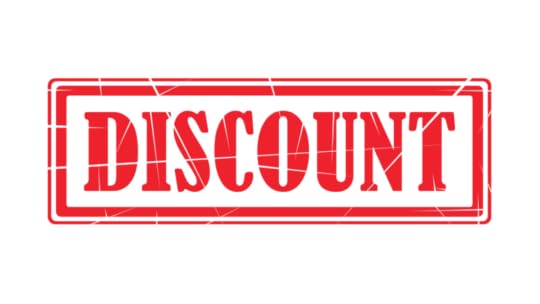
It
is easy to blame the salespeople for rampant discounting but it has always been
my experience that the primary responsibility for over-zealous discounting and
the resulting price and margin erosion rests with management.
When a manager has a surplus, whether of inventory or of salespeople not hitting their numbers (meaning that he or she isn’t hitting their number either), they look for a solution in the form of a discount.
Approach the end of the month or quarter with too much inventory on the shelves or too many people not hitting their quota, and the first thing many managers do is authorize their salespeople to offer a discount to a customer to win an order and move some product.
All
parties involved in a sales transaction, buyer and seller, are familiar with
this cause and effect scenario. Salespeople wait for it. Customers wait for it.
It is not an accident that the trajectory of orders during a quarter traces the
familiar hockey stick shape. Everyone is familiar with the rules and is in on
the game.
The problem with this end of period discounting is that these “one-time” discounts have a tendency to morph into the new default price point for your customer.
If you’re handing out discounts at the end of a quarter to induce customers to close an order or accelerate a delivery, then your next order from that customer is going to be at the new price point you established with the discount.
Balk at that and you’ll find that all your orders from customers will start to materialize around the end of your accounting periods.
Surplus is also a key factor in discounting conducted by salespeople. It occurs because salespeople oversell their product or service, in effect offering more features than what the prospect needs to meet their needs.
This overselling occurs when salespeople are not adept at precisely qualifying their prospect’s exact requirements.
A salesperson can’t sell value if they don’t understand the problem the customer is trying to solve. As a consequence, they tend to sell the entire feature set of their product or service in the hope of encompassing the prospect’s needs in the process.
When
a salesperson’s offer exceeds the needs of the customer they are left with the
choice of reducing either the scope of their offer or their price in an attempt
to win the order. Offering surplus features that are without value to the
customer almost always leads to a discount.
As a manager, to effectively address this discounting problem you need to develop a plan to reduce the surplus factors in your selling.
First, the answer for salespeople who oversell is ongoing in-depth product training. Learning to sell value is next to impossible without a true understanding of your product or service. A rule of thumb is that a salesperson can’t effectively sell value if they don’t understand their product better than the prospect. Does your training accomplish that?
The second surplus factor to manage is the end-of-quarter discounting syndrome. This is a hard habit for management to break. Unfortunately going cold-turkey is the only effective method to curtail the practice.
It could take one or two challenging quarters to flush the temptation out of your system and re-train your salespeople, prospects and customers. However, you will learn which customers are buying your product for the value versus the discount. These are the customers to focus on in the future.
The post How to Talk to Prospects about Value and Price Objections appeared first on Andy Paul.
December 7, 2019
How to Build a Responsive Sales Culture

It’s not what you sell, it’s how you sell.Customer’s are pre-educated before they ever contact a seller; how a seller responds is decisive to their ability to win the orderResponsiveness is a complete response (info delivered with speed) not just a fast response.Responsiveness can be a key competitive differentiatorResponsiveness is not just an attitude. It is also a process. As a process is needs to be defined and continually measured.Management needs to commit to a responsive sales culture.
It’s Not What You Sell, It’s How Your Sell It.
Responsiveness
—n., the quality of quickly and
effectively reacting to challenges and changing conditions; an essential
element in any successful sales effort.
Unfortunately, most companies and sales people don’t realize that their sales success hinges on this very element: responsiveness. In today’s rapidly evolving markets, both for products and services, companies must quickly learn new ways to differentiate themselves from their competitors.
It’s not about what you sell, but how you sell in order to create value, develop credibility and build trust with your prospects, while differentiating yourself from the competition and winning more orders in less time.
The key to this sales-based differentiation is to incorporate absolute responsiveness into every step of your selling process.
Absolute responsiveness in selling is composed of two specific components that marry to produce improved sales results and satisfied customers.
Responsiveness = Information Content + Speed
This formula for responsiveness
gives you the means to provide your prospect or customer with the complete
information they need to make an informed purchase decision with the least
investment of their time possible.
It is not enough to just be fast.
Providing an incomplete answer to a prospect’s question is the same as not
responding at all. Your prospect can’t move forward in their buying cycle with
incomplete information.
Similarly, it is not enough to be
thorough and slow. A complete answer to a customer’s question that is provided
too slowly means that you are wasting the customer’s time, creating a bad
perception of your responsiveness and leaving yourself exposed to a competitor.
To break these concepts down a bit, “information content” is composed of two parts.
The first part is precisely that data or information that will completely answer your prospect’s questions and enable them to progress to the next step in their buying process. For example, offering a complete, concise answer to an initial prospect inquiry is the essential first step in the fundamental chain of being responsive.
The second part of “information content” is the contextual data and information prospects and customers need that will help create the overall context for the decision they have to make.
For instance, an informed buyer may need to know where technology is evolving in your product segment, not only for your company but also your competitors.
They may need to know what their competitors have done or are doing with similar products.
They may need to have a more complete understanding of what products will be coming to market in the near future that could impact their competitive position if adopted by a competitor first.
Speed, obviously, is the time it
takes to provide the required answers to the customer. Using the same logic as
with information content, if your prospect or customer has a question, it needs
to be answered in Zero-Time.
Why is responsiveness important?
Chances are good that you sell in a market where product differentiation is expensive and difficult to maintain. Innovative products and services are quickly copied and commoditized in a rush to market by a myriad of competitors.
If the product(s) you sell, and all your competitors sell, are largely the same in the eyes of your prospects, how do you stand out? How can you reliably distinguish yourself from everybody else?
As an absolutely responsive seller you will demonstrate to your customer that the experience of working with you and your company is different from the others, and in the process, develop a level of credibility and trust that will result in winning orders.
Responsiveness is also essential to
achieving and maintaining customer satisfaction and generating repeat orders
from your customers. A customer request for support after an order is nothing
more than a question that needs to be answered in Zero-time; it should treated
the same as a prospect request for information during pre-sale. Being
absolutely responsive to your existing customers is the simplest way to
guarantee repeat orders and protect your customer base from the competition.
In today’s marketplace, it’s not “what” you sell; it’s “how” you sell. Responsiveness is the
essential answer to the question “how.”
Why Being Responsive is Faster Than Being First to Respond

You may think that I am just playing with words here. But carefully read on and you will find that the power of this statement lies in its execution, not its elocution.
What does it mean to be responsive? First, I will tell what it
doesn’t mean. “Responsive” doesn’t mean fast.
Responsiveness in selling has two inseparable elements: information content and speed. Take away one element and you are no longer responsive. Imagine that responsiveness is a molecule like H20 composed of two elements; hydrogen and oxygen. Take away the H2 (two hydrogen atoms) and you just have O (oxygen.) That’s great for breathing but it’s not much use in the thirst quenching category.
Similarly, if you are fast to respond to your prospects, but cannot give them the data and information they need to move forward in their buying process, then you are not being responsive. Being fast is good for gold medals but in the absence of content speed is not a virtue in sales.
Your responsiveness, or lack thereof, is your prospect’s first experience with your company. The initial interaction you have with a prospect or customer is judged to be a win or a loss. What do you want the prospect’s first perception of you, your product and your company to be?
Who ever loved, that loved not at first sight?
Christopher Marlowe
Or…
Contempt is as frequently produced at first sight as love.
Herman Melville
Responsiveness is an absolute value. You either are or your aren’t. You can’t be partially responsive. Customers are acutely aware of responsiveness in sales. Unfortunately they aren’t on the receiving end of it very often. But, what happens to your sales results (and, conversely, those of your poor competitors) when you condition your prospects and customers to expect complete responsiveness from sellers?
We generally make up our minds beforehand to the sort of person we should like…;—and when we meet with a complete example of the qualities we admire, the bargain is soon struck.
William Hazlitt
For a seller, responsiveness becomes a key competitive advantage
in a commodity oriented world. Customers witness from the first sales call the
experience of working with your company. Help your customer complete their
buying cycle sooner and they will begin to expect this level of responsiveness
from all companies. The competitors that don’t measure up will find themselves
at a distinct disadvantage.
How can you instill a culture of absolute responsiveness in your selling?

1. Make it a priority.
Everyone who engages with the customer has to be trained on the importance of providing the higher level of sales service and responsiveness that compress the customer’s buying cycle.
2. Create metrics for your key sales processes.
You have to measure responsiveness in your selling. If you aren’t measuring it, it isn’t happening. Start with the simple sales processes first. For instance, how long should it take to respond to an individual sales lead? How long should it take to follow up 100% of your sales leads? You can’t be responsive if you aren’t following up all of your leads.
3. Sell with the Sharp End of the Stick.
This means to put your people with the deepest product knowledge closest to the point of attack; closest to the customer. A customer’s buying process is a search for information to help them make a purchase decision. If your front line sales people can more quickly provide the answers the prospect requires, then your responsiveness will skyrocket.
4. Map your content to the prospect’s buying process.
Unless you are selling a brand new product, you should know what content the prospect requires at each stage of their buying cycle to move forward to the next stage. This content has to be in a form that is quickly and easily shared with your prospects.
5. Manage to the metrics.
The metrics, and the individual performances against them, have to be reviewed daily. Your CRM system is a perfect tool for tracking and managing responsiveness.
There is an epidemic of poor responsiveness in sales. Some of it
is laziness. Some is due to inattentiveness on the part of management. Mostly
poor responsiveness is due to a lack of understanding about how essential the
first perception of the prospect is to
your ability to win their business. If you value responsiveness then it will
quickly become apparent to your prospect that you do. And set you apart from
your competitors.
You only have one chance to make a good first impression.
Lois (my Mom)
Customers today are armed with a wealth of data gleaned from the Internet about the products and services they want even before they contact a seller for the first time.
Given the trove of information available, if a buyer still has questions after doing their research, then their need for an answer is, by definition, urgent and critical.
When that customer contacts a seller, they want an answer right now in order to make an informed buying decision in the least time possible.
The first seller to be absolutely
responsive to the buyer’s need for information wins. Every person-to-person
interaction between a salesperson and a customer, who must be presumed to have
already researched your product online, requires the salesperson to be
completely responsive and create value for the customer in the least time
possible.
Why are responsiveness and creating value so important? Here are two important reasons:

For all businesses, responsiveness is inextricably linked to content and speed. If you’re a seller and your customers are working their way, step-by-step, through their decision-making process (otherwise known as the buying cycle), they won’t move from one step to the next until their information requirements for the current step are completely satisfied. Without responsiveness, a sale, or a buying cycle, will come to a screeching halt.
When you create value for the customer during the selling process you build trust and differentiate your company from your competition. A customer may have 75% of the information they need to make a purchase decision about your product when they first contact you, but they’ll understand very little about the intangible value your company or product can add to their business. Being “absolutely responsive” will quickly give you that intangible advantage over your competition.
There are four simple rules to being absolutely responsive to your customer.

Responsiveness = Content + Speed.
You aren’t absolutely responsive unless you are completely responsive.
A fast but incomplete response to a customer’s request for information is the same as no response at all.
A complete but slow response to a customer is marginally better than no response.
That’s what Zero-Time Selling is about: using absolute responsiveness to reduce to zero the amount of time required to convert a sales lead into a satisfied customer.
Do whatever is necessary to take the prospect’s breath away with your responsiveness. Keep in mind that every sales interaction with a prospect is an investment of time by the customer; time that they could be spending on other important tasks.
The customer’s Return On the Time Invested (ROTI) in the buying process will fall dramatically if you aren’t completely responsive. A completely responsive salesperson not only follows up with the prospect in Zero-Time but also has the product knowledge and experience to answer virtually 100% of the prospect’s questions on the spot.
Think about the negative compounding impact of having salespeople who are not in command of all the facts about their product or service. The extra time they spend shuttling between your product experts and the customer is time they could be devoting to other prospects.
If all of your salespeople aren’t completely responsive, your company will handle fewer prospects than it should, in essence handing business to a competitor’s salesperson who is completely responsive.
Here’s a quick story to illustrate
my point.
Recently I was shopping online for a particular service. I spent a few hours researching the alternatives and narrowed my choices to one system that seemed to fit my needs. I had some questions before I could make a decision. I tried to find a phone number to call but they didn’t offer one.
So, I tracked down an email address for their Sales department and submitted a list of 5 specific questions. Within an hour I received an email response. Needless to say I was encouraged. I like doing business with like-minded companies. Then I read the response. As best I could tell it didn’t appear to have been machine-generated, but even still…
Dear Andy,
Thank you for your interest in XXXXXXXXX. We are here to help you. Please let me know if you have any questions.
Regards,
John
………….
Sigh. I bought from another company.
The post How to Build a Responsive Sales Culture appeared first on Andy Paul.
The Virtuous Sales Cycle: How to Build and Sustain a Consistently Strong Sales Process
Key Points
1. Most sales people
find themselves trapped in a vicious sales cycle.
2. Consistent sales
success depends on following a virtuous sales cycle
3. 3 behaviors that lead
to virtuous sales cycle
4. What are you doing to
stay fresh professionally?
5. Without renewal you
can become stale.
6. Sellers have to
factor the customer’s needs into their sales processes.
7. The Uncertainty
Principle in Sales states that how you sell to the customer changes how the
customer will make their decisions and the process you need to use to sell to
them.
8. Uncertainty Principle requires flexibility and in its application leads to a Virtuous Sales Cycle.

The Virtuous Sales Cycle: How to Build and Sustain a Consistently Strong Sales Process
Is Yours A Vicious Sales Cycle? Or A Virtuous Sales Cycle?
Which One Are You In?
Most
everyone is familiar with the concept of a vicious cycle, or vicious circle
(i.e., a repeating sequence of connected events in which each cycle reinforces
the previous one, in this case, negatively).
In
sales, a Vicious Sales Cycle stems
from bad sales practices that lead to poor results combined with an inability
or unwillingness to change, which leads in turn to a never-ending,
self-reinforcing cycle of unacceptable sales performance. Unfortunately too
many sales professionals operate within a Vicious Sales Cycle.
What
are some key behaviors that open the door to a vicious sales cycle?
1.
Lack of consistently applied sales
processes. Success in sales is based on a foundation of well-defined,
documented sales processes (and associated metrics) that establish clear
expectations for how selling should occur in your organization.
2.
Lack of responsiveness. Today’s
customer is substantially pre-educated about your product or service before
they ever engage with your sales team. By definition, when they do contact you
for the first time their need for information in order to make a decision is
urgent.
3.
Lack of urgency. See #2 above. The
timeframe for every sales action should be immediate. It’s what customers
expect. Anything less is the start of a slippery slope.
4.
Lack of product knowledge and business
acumen. Customers rely on you to provide the necessary content and context
they require to make a fully informed purchase decision. Customers will be
reluctant to invest their time to build relationships with sellers who can’t
provide value.
Your
goal should be to build a Virtuous Sales
Cycle. A virtuous cycle is defined as a “Self-propagating advantageous
situation in which a successful solution leads to more of a
desired result or another success which
generates still more desired results or
successes in a chain.”
A
Virtuous Sales Cycle is what happens when best sales practices are consistently
applied to produce above-average results, which in turn create a chain of
positive results that feed off of each other to generate even better
performance.
Therefore,
the aim of every salesperson should be to convert their sales efforts into Virtuous
Sales Cycles rather than the all-too-typical Vicious Sales Cycle in which
unresponsive, time-wasting sales behaviors spiral downwards into a never-ending
series of poor performance.

What
are a few of the behaviors you should use to create and perpetuate a Virtuous
Sales Cycle?
1.
Sell with Maximum Impact in the Least
Time. Selling with Maximum Impact in the Least Time means that every
interaction with a customer must be pre-planned to achieve the maximum impact
and provide the maximum value for the customer with the least investment of
their time possible.
2.
Be absolutely responsive to the customer
in Zero-Time. Because the timeframe for every sales action is immediate
anything that you put off, any customer interaction that you defer until later,
is less likely to ever occur. In my training courses I teach that “later” lives
on the same street as “never.”
3.
Continually fine-tune your sales
processes. Nothing stays the same. Products change. Customers change.
Technology changes. How you sell your product, and the metrics used to measure
the effectiveness of your processes, have to evolve to keep pace with these changes.
Let’s
put this in context and see how you can use these to initiate your Virtuous
Sales Cycle. What happens when you consistently sell with Maximum Impact and
enable your customers to make informed purchase decisions with a smaller
investment of their time? By virtue of selling more effectively you will
naturally compress the customers’ buying cycle. Compressing their buying cycle
will not only win you more orders it will also create more selling time for you
to sell to additional prospects. (Reduce your prospects’ buying cycle by 5%
then you will suddenly have 5% more sales time. This could be equal to an extra
13 selling days per year. How many more orders could you win with that extra
time?) If you sell to these additional prospects in the same effective manner
then this process of positive sales outcomes becomes self-propagating. Success
begets success and you have kick-started your Virtuous Sales Cycle.

What’s
Your Sales Expiration Date?
What Are You Doing To Stay Fresh?
Pick
up nearly any food product you can find on the shelves of your local
supermarket and it will be stamped with an expiration date. Look on the bottom
of the carton, or on the cap, and you’ll see “Best if used by June 21, 2012” or “Sell by June 21, 2012.” This useful bit of regulation is
designed to protect consumers from products that sat on the shelves too long at
the store and didn’t sell or that have been hidden in the back of your cupboard
behind the cans of baked beans and slowly turning moldy and inedible over the
years.
Who’s
protecting your customers from salespeople that have turned moldy and stale.
Have You Gone Stale?
Salespeople
have an expiration date as well. If you don’t adapt your selling to keep pace
with your customer’s rapidly changing buying behaviors, then you risk turning
into the sales equivalent of an expired credit card. Are you keeping fully
informed of the economic and technological changes that are affecting your
customers business? Are you fully educated about the new technologies and
products at your company? Do you know more about your products and services
than your customers? Not really? Then, like a credit card past its expiration
date, you are of no value to anyone.
Who’s Checking Your Expiration Date?
With
new clients I often see sales managers that keep chronically underperforming
sales people onboard well past their expiration dates. Why? Sales managers are
human and, like most people, they are averse to change. They find it easier to
follow the path of least resistance and to work around a sluggard rather than
go through the hassle of firing them. Even if it places an extra burden on the
rest of their sales team to pick up the slack.
If
you have salespeople who are no
longer suited to sell your product or service then every minute you keep them onboard is a minute too
long. It is a myth that good salespeople can sell anything. To ensure the
growth of your company, salespeople
must have relevant experience and skills that will enable them to be completely responsive to the
information requirements of their customers in Zero-Time. If they don’t, they
must go. Period. Just like that month-old carton of leftover Chinese takeout
that’s turned into black mush in its little white carton in the back of your
fridge.

What Can You Do To Stay Fresh?
The
only constant in selling is change. Products change. Technology changes.
Services change. Customers change. As a salesperson, or sales manager, you have
to confront and adapt to change as well if you want to remain fresh and
competitive. There is no one right answer but there are a variety of choices
you can make:
1.
Make Your Numbers for a Change: It
is amazing what can happen to a salesperson if they put in that extra effort,
step up their responsiveness, make that extra cold call (or two or three) and
start hitting quota on a regular basis. Nothing breeds confidence, and success,
like success.
2.
Stay Current With New Thinking and
Trends in Your Profession: For instance, when was the last time you read a
book about sales? I urge everyone in sales, salespeople and managers alike, to
read at least one new sales book per month. (For instance, you could start by
reading my book, Zero-Time Selling, 10 Essential Steps to Accelerate Every Company’s
Sales.) Sales has undergone a rapid change in past 10-15 years and the
evolution isn’t stopping. Going about your job the “old-fashioned”
way is not going to get it done. It is essential to keep an open mind about new
ways to achieve your sales objectives.
3.
Try Something New: Take something
from that book you’ve just read and apply it to your selling. Take one new
technique from the book and apply it in your daily routine for a week. And then
add something new each week thereafter.
4.
Educate Yourself About Your Customers:
Set up a series of Google Alerts to keep abreast of the news about your
customers, their industry, their technology, their competitors and your
competitors. Use Alltop to survey and read the best blogs that address
your customers’ industry(s) from a market, financial and technological
perspective. In today’s market, it is not enough to just do your job. You have
to be a good business person, who can add value to the customer through your
business knowledge.
5.
Get Some Extra Sales Training:
Invest in some extra sales training. Pick an area where you need to sharpen
your skills and attend an online class. It could be social selling,
prospecting, writing, whatever will help you communicate more effectively with
your prospects and customers. Make this an annual event. Don’t rely on your
management to provide training that addresses your weaknesses. Be proactive.
6.
Hang with the Engineers: There is no
better way to learn the ins and outs of new products than to hang with the
product development people in your company. The most important relationships
you need are not necessarily with your customers.
I’ve
heard a lot of other good suggestions lately about how to re-energize and
re-motivate yourself in selling. One friend is taking an acting class to help
him break out of his “mold.” Another has started seeing a therapist
to help him shed some negative habits that are holding him back in his dealings
with customers. And, before you snicker at that suggestion you might ask
yourself why millionaire professional athletes from all sports around the globe
flock to talk with Dr Bob Rotella, the world’s leading sports psychologist.
How
do you stay fresh?

The Uncertainty Principle in Selling
Using Change to Your Competitive Advantage
You probably don’t consider the impact of
physics on your sales efforts. But you should.
You should evaluate your prospects’ buying
processes in terms of Heisenberg’s famous principle of uncertainty. Werner
Heisenberg, winner of the Nobel Prize for Physics in 1932, is most well known
for his Uncertainty Principle in which he demonstrated that the act of
observing or measuring a process will necessarily change its outcome. While
Heisenberg arrived at his famous formulation through his work with the behavior
of sub-atomic particles, I have always found that a variation of the
Uncertainty Principle applies to sales as well.
My Uncertainty Principle of Selling states: The
process of selling to your prospect invariably changes their requirements and
decision criteria moving forward. The very process of discovery, of helping the
prospect define their requirements, and providing the data and information in
response to their questions, forces them to re-assess their needs and what the
criteria will be that they use in evaluating sellers and making an informed
purchase decision.
What happens when your prospect learns that
your SaaS product provides a feature, and associated value, that they hadn’t
anticipated when they first put together their requirements? Or, what happens
when your prospect’s expectations for the new machine tool they are looking to
acquire aren’t fully met by any of the products that they have evaluated? The
trajectory of their buying process changes and necessarily forces immediate
strategy adjustments on the part of the seller, otherwise known as you.
Why is this “Uncertainty” important
to you? Because too many sales people fall into the trap of thinking about
their sales process, and their prospects’ buying process, like the instructions
on your shampoo bottle: just lather, rinse and repeat.
You need to factor into your selling strategies
the fact that your prospect’s buying process isn’t a linear, inflexible string
of events. You should always make a detailed account plan for a sales
opportunity. For instance, your account strategy can consist of steps 1 through
N, that you believe will take the prospect through their buying process. But
then, as soon as the customer has completed step 1, the situation will likely
change and render your plans moot. This means that you have to be flexible in
your approach to selling.
The second reason that the Uncertainty
Principle of Selling is important to you is that it reinforces the necessity of
being completely and rapidly responsive to your prospect in their search for
the information they need to gather and evaluate in order to make a good
decision. Studies show that if you can be the seller who provides the
information that shapes your prospect’s “buying paradigm” or
“buyer’s vision” then your odds of winning their business rise fairly
substantially. It is always a much stronger position to be in if you are
proactively shaping your selling strategy by providing the value to the
prospect that shapes their buying process, rather than having to be completely
reactive to the actions of your competitors.
Conduct a review of your pipeline and ask the
following questions about each one of your qualified prospects:
1. What can I do for this prospect right now,
this minute, today, that will have the maximum sales impact in the least time
possible? Make a list of the actions you can proactively and immediately take
to shape the buyer’s paradigm and use the Uncertainty Principle to your
competitive advantage.
2. What can I do today that will create value
for this prospect and differentiate my product, company and me from my
competitors? Define one step you can take that will set your offering apart in
a meaningful, tangible way. If this takes too long to figure out what this
should be then you haven’t been paying attention to your prospect.
3. What information does this prospect still
require from me in order to make an informed purchase decision in the shortest
time possible? You should know what this is at any point in the sales process.
The key is to use the Uncertainty Principle to
your advantage. Plan your account strategy but be alert and alive to the
possibility of change.
The post The Virtuous Sales Cycle: How to Build and Sustain a Consistently Strong Sales Process appeared first on Andy Paul.
December 5, 2019
The Secret To Foolproof Prospect Qualification
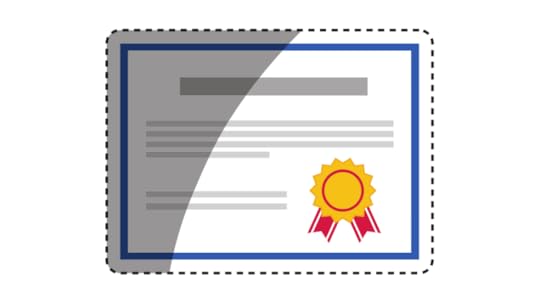
Are You Qualifying The Wrong Prospects? How To Break Your Pipeline Addiction. Selling To The Right Level: Is Your Product Tactical or Strategic? Chasing a Buck Instead of Disqualifying a Prospect What To Do After “We’re Not Interested” BONUS: The Root of Discounting
Are You Qualifying The Wrong Prospects?
When you are prospecting for new leads are you looking for prospects that want to buy a product or service that is like yours? Or, are you searching for prospects that need exactly what you have to sell?
These are two very distinct approaches to business development and yield two very different sets of prospects. And results.
Category Qualification vs Product Qualification
The default for most salespeople is
to approach qualification from the perspective of qualifying the prospect to
buy a product/service that is like theirs, that is similar to theirs. They are
qualifying their leads as prospects for the category of product or service they
are selling. This is called category qualification.
If you pursue a category qualification approach then that means you are more focused on a classic “sales is a numbers game” approach to selling. ‘Let’s fill up the funnel and see how many pop out the bottom.’ This has been the primary method salespeople have used since the beginning of the 20th century. I call it a brute force approach to sales that may yield some results but is wasteful of the seller’s and prospect’s time.
The alternative to category qualification is product qualification. A disciplined product qualification approach says that you are prospecting for customers that need exactly what you have to offer. What is the unique value(s) that your product/service/company provides to a customer? What are the specific features/benefits/services that differentiate your products from your competitor?
As a seller your task then becomes to find prospects whose key decision criteria precisely align with your unique value. This takes more work upfront. It also requires the self-discipline to “catch and release” prospects that don’t measure up to your qualification standards.
But, take a second and imagine what will happen to your sales if your pipeline is composed primarily of prospects that are qualified to buy your specific product or service as opposed to your category of product or service. Provided that you are a responsive seller (or what I call a Zero-Time Seller) the result will be compressed buying cycles, improved sales productivity and more money in your pocket.
Break Your Pipeline Addiction
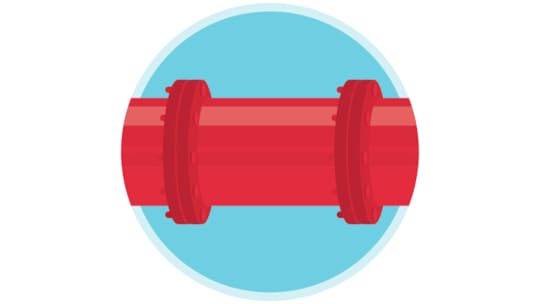
The reason that category qualification is still preferred by salespeople is due to their, and their sales manager’s, unhealthy preoccupation with the size of their pipeline.
Unfortunately for too many sales managers the size of a salesperson’s prospect pipeline is a lazy metric to assess.
In reality it doesn’t tell the manager anything about the likelihood of any of the deals turning into an order.
(Ironically, most sales managers will say it is easier to forecast their numbers if their pipelines are robust when, in fact, the are dissipating tremendous amounts of sales time with unqualified prospects and creating greater uncertainty about their results.)
Obviously it is easier to fill a pipeline with “qualified prospects” if you are less discriminating about the quality of those prospects. But this has a major negative impact on the speed of your selling. It takes too much time to weed out the prospects that are never going to buy from you. That time would be much better spent upfront ensuring that the prospect is qualified to buy precisely what you are selling.
Here are some tips you can employ
to begin breaking your dependence on category qualification, develop a truly
productive pipeline and speed your sales:
1. Re-qualify your current pipeline
Go through your current pipeline and re-qualify every prospect according to a product qualification standard. Remember, that product qualification is not about qualifying the prospect to buy a product that is sort of like yours or somewhat like yours. It is about qualifying the lead as a prospect to buy exactly what you are selling.
This may seem like an onerous task but the alternative is to continue spending more of your limited sales time on prospects that are not going to not buy from you.
2. Be utterly realistic and ruthless
If you believe that a prospect is
strongly leaning towards another solution then that means that you probably
missed something in the qualification stages. It may be that that they are
qualified to buy your competitor’s product but not yours. If that is the case,
don’t cling to the prospect. Not everyone will buy from you. Focus your time
and energies on those that will.
3. Get a head start on the competition
Unless your product or service is
identical to that being offered by the competition, using product qualification
means that you should begin a qualified prospect’s buying process with a
substantial head start on your competition. This translates into shorter buying
cycles and more sales time to close more orders.
Mind The Gap: Selling To The Right Level

Is Your Product Strategic or Tactical?
I hate to break this to you. But,
for most of you reading this article, the products or services you are selling
are NOT strategic to your customer. This doesn’t mean your product or service
isn’t important. It’s just not strategic. And that dictates how, and to whom,
you should be selling. Understanding the difference is crucial to your ability
to help your prospect move more quickly through their buying process and give
you the order.
For every product and service there is an Actual Decision Maker (ADM), a functional, economic or organizational buyer who really makes the decision which vendor to select. Making an accurate determination of whether your product is strategic or tactical is the first step to defining who the ADM will be. Identifying that person within your prospect’s organization is a key part of the qualification process. (Qualification is a collaborative process and you can’t qualify a prospect with someone who isn’t the decision maker.)
Which is Which?
Examples of strategic products are
major acquisitions or purchases that can affect the direction of a company.
Large capital expenditures for buildings or equipment. Major commitments to
financial institutions. Large sole source volume purchases of critical
inventory. Investments in mission critical systems such as data centers,
network infrastructure and software. Anything that rises to a certain dollar
level relative to the company’s revenues.
Tactical products and services are everything else. A company can’t operate or function without them but the dollar level of the purchase is low relative to the size of the company, the products and services are relatively commoditized and there are multiple vendors from which to choose.
This equally applies to certain raw materials and components to build products as well as consumable supplies and services that companies need to keep the lights on and operate.
As a rule of thumb, decisions on
strategic products are made by ADMs at high levels, or the highest, within your
prospect’s company. Decisions on tactical products can be made a a wide variety
of levels within a company. The consequences of incorrectly identifying the ADM
and mis-characterizing your product or service as strategic vs tactical include
elongated buying cycles as time is wasted selling to the wrong people at the
wrong levels.
In part, this confusion between the strategic and the tactical stems from the sales literature and sales training that claims that the one true path to sales success lies in selling to the C-suite. However, if you blindly follow that advice without first accurately assessing the nature of the product you are selling, then you’re at risk of setting out on a path that will slow down your sales process.
(Even complex software priced and delivered in SaaS models is now often a tactical product/service. I spoke with the VP of Sales of a well-known SaaS vendor at the Sales 2.0 conference in San Francisco. He said the great thing about their business model is that it had compressed their prospects’ buying cycles by largely eliminating the need for C-suite approval for their product.)
Fortunately for you the
overwhelming majority of products and services that are sold are tactical. They
are good products. Even important products. Perhaps products and services just
like yours. Unless you are selling to a very small business where the CEO/owner
makes every single decision, avoid wasting your sales time by insisting that
your path to getting an order requires that you sell your product and service
to the denizens of the C-suite.
Mind The Gap
A useful way to look at this is to envision that there is a time gap between each level of management. This time gap is the additional amount of time it takes for each additional level of management above the Actual Decision Maker to be briefed and add their input to a decision.
In my experience this gap should be estimated to be at least a week in length, though it could be much longer. If there are two levels of management between your Actual Decision Maker (ADM) and the C-level Boss, then you risk injecting a minimum of two additional weeks into your prospect’s buying cycle if you persist in an attempt to involve the Boss in a decision that she was content to leave to her staff.
This creates time for your competitors to get back into the deal. Falling into this time gap puts the brakes on your momentum and injects an element of risk into the sales situation that didn’t exist before.
Let me give you an example.
One of my clients was Marv, the CEO of a small tech company that manufactured an electronics product with a bill of materials that consisted of a couple hundred components. Each one of those components represented a sales opportunity for one or more vendors to supply my client’s needs for the thousands of units they built each year. My client CEO signed off on the purchase requisitions that approved the expenditure for parts but he wasn’t making the decision about which vendor to select for each of those individual components. Those decisions were made by the design engineer, component engineer or manufacturing engineer.
One day a vendor’s salesguy, who
was just about to be given an order, managed to convince his engineering
contact that he absolutely needed to talk to Marv before he got the order. After
all, he had been trained that he needed to sell all the way to the top. He
triumphantly entered Marv’s office. Marv turned to his engineer and asked
“Why are you bringing this to me? I don’t need to be involved.” He
paused. “But now that you’ve brought this to me, I will give my
opinion.” Suddenly the done deal was not so done.
Are You Chasing a Buck Instead of Disqualifying a Prospect?
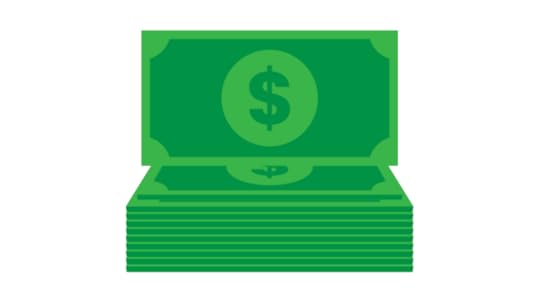
When a potential prospect tells you
that your product is ‘too expensive’ what they usually mean is that your
product is just that, too expensive for their budget. It isn’t an objection. It
is a fact. Sometimes a prospect just can’t afford what you are selling. Even if
they are otherwise a perfect fit for your product or service.
Unfortunately, salespeople are
often too busy chasing a buck to really listen to the customer. They
desperately cling to these so-called prospects, which really aren’t prospects,
because they are loathe to kick any potential buyer to the curb. But, as a
consequence, they skip what should be an essential early step in their sales
process: qualifying the prospect on price.
Price Qualification
There is no mystery to price
qualification. Qualifying a prospect on price means that you reach a
preliminary agreement about the value that the prospect will receive from your
product in exchange for the dollars they are going to pay you. In other words,
you have reached a tentative agreement with the prospect that your price is
proportional to their assessment of your product’s value.
Unfortunately, salespeople have an
unhealthy fear of the price question. They want to keep it in a closet somewhere
and forget about it. It scares them. Like zombies or movies based on Jane
Austen novels. They are afraid that any discussion of price will scare off the
prospect. Which is exactly the point.
The downside to the salesperson of
not qualifying, or disqualifying, a prospect on price is the risk of wasting
their limited and valuable selling time on buyers who will not buy.
When Should You Qualify on Price?
Price qualification’s rightful place is early in the sales process, (but after category/product qualification) during the discovery and qualification phase, because a price objection is a valid reason for you to disqualify a prospect.
First, ask the right questions of the prospect to fully understand their requirements and make sure these are aligned with your value proposition (aka your features, benefits and advantages.)
Then clearly lay out the value, price and the ROI they can expect from your solution based on their stated requirements. If you can’t reach a preliminary agreement with the prospect on your “value for price” at this stage, then you probably need to walk away.
Qualification on price and value
doesn’t mean that your prospect is 100% in love with your price. But it does
mean they agree that you’re in the ballpark and any further discussions of
price will be a negotiation, not handling an objection.
I have four simple rules of thumb about price objections and
price qualification that I have successfully taught to clients and salespeople
over the course of many years.
Qualifying a prospect on price means that you reach a rough agreement with the prospect that your price is proportional to their assessment of your solution’s (product or service) value. In other words, you have reached a preliminary agreement about the value that the prospect will receive for the dollars they are going to pay you. Qualification on price and value doesn’t mean that a prospect is in love with your price. But it does mean you’re in the ballpark and any further discussions of price will become a negotiation, not handling an objection.
A price objection is a valid reason to disqualify a prospect and must take place early in the sales process. A true price objection from your prospect late in the sales cycle means that you misplaced your backbone at the moment of truth and didn’t disqualify them when you had the opportunity. They were never a true prospect for your product or service and you just wasted a lot of time with someone who was never going to buy from you.
Be direct with the prospect about your pricing. Salespeople have developed an unhealthy fear of the price question. They want to put it in a closet somewhere and forget about it. It scares them. Like zombies or movies based on Jane Austen novels. There is no mystery to qualifying on price. The shortest distance between two points is a straight line. Do what you do best. Ask the right questions of the customer to understand their requirements and make sure they are aligned with your features and specs. And then talk price and value based on their requirements.
You can’t have a price objection from a truly qualified prospect. As discussed in #1 above, an intrinsic part of prospect qualification is a rough agreement on price and value. If the prospect is still pushing back on price but wants to move forward with you in their buying process then you should beware. It is possible the buyer has a hidden agenda and is using you in order to advance it. I remember one very large deal I worked on where the prospect kept my company in the deal even though they kept whining about our price. We were confident in our solution so we constructively responded to his pricing concerns. But then it reached a point where it became obvious that he was just using us as a leverage point to negotiate a better deal with our competition. It was a painful lesson learned.
This begs then the central
question: can you get a price objection from a truly qualified prospect?
‘Dude, that’s not a qualified prospect.’
A true price objection surfaced by your prospect at the end stages of the sales cycle usually means one of two things:
A) you misplaced your backbone at the moment of truth and didn’t disqualify them when you had the opportunity, or
B) you didn’t fully disclose your price during qualification.
If it is A, then they were never a true prospect for your product or service and you wasted your valuable sales time on someone who was never going to buy from you. If the answer is B, then you misled the prospect about your value proposition and it will be difficult to rebuild your credibility with the prospect and win the order.
Finally, a warning. If you do a good job of qualifying the prospect on price, but they keep pushing back on price while ostensibly still moving forward with you in their buying process, then you should proceed with caution. It is possible the buyer has a hidden agenda and is using you in order to advance it. I remember one very large deal, early in my career, where the prospect kept raising price objections even though I had carefully qualified them.
Unfortunately, I was inexperienced and made the mistake of responding to these objections. I didn’t have the experience to understand that the prospect was using me as a leverage point to negotiate a better deal with the competition. It was a painful lesson learned.
What to Do After ‘We’re Not Interested”
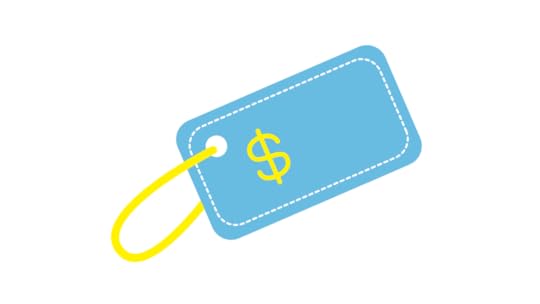
Anyone who has ever sold for a
living has encountered the following situation. You’re talking for the first
time to Larry, a decision maker at ACME Tech, a company that you feel could
potentially be a fit for your product or service. But almost before you get two
words out of your mouth, Larry shuts you down by saying one of three things:
“We already have a supplier.”
“We’re not in the market right now.”
“We’re not interested.”
Many sales trainers would have you
believe that this response from your “pre-prospect,” is merely an
objection that can be overcome with the appropriate salesmanship. Not
interested? No problem. Not in the market? No problem. Already have a supplier?
No problem.
Well, actually, there is a problem.
The problem is the reluctance of salespeople to walk away from a potential
prospect that doesn’t want to become a prospect. Statements of disinterest are
usually statements of fact, not objections. There are always exceptions to the
rule but in general people mean what they say.
In my consulting and speaking work
I am frequently asked the “What should I do when people say they’re not
interested?” question by sales people. For my response, I harken back to
my first boss in sales, Ray. He had the best, and simplest, answer to this
question: “Go find someone who is (interested.)”
If you would like to be more
methodical and analytical about how to respond to these statements from a
potential prospect then you need to ask yourself two tough self-directed
questions and be sure to give yourself completely honest answers.
Self-Directed Question #1:
Is this customer a great fit for our product or service? Not a good fit, but a great fit. Do they fit the profile your company has established for the target customer for your product?
Self-Directed Question #2:
Is the solution I’m selling clearly superior to the alternatives the customer is already using or could acquire in the near term? Set aside your corporate loyalty for a minute and give an honest answer here.
Simply put, would this company be
substantially better off if they adopted your product or service? And,
secondly, are you better than the other guys? In similar situations, with
similar customers, have you reliably beaten the competition?
If you answer either question
incorrectly, you run the very real risk of investing your most precious and
limited resource, your selling time, in the pursuit of a customer who will
never buy from you. Think of all the other sales opportunities you’ll have to
forgo in order to work on this one.
These are not easy questions for
most salespeople to answer. Sales professionals typically are confident people
and thrill to the challenge of the chase. They would like to believe a) that
the solution they sell is superior to all of the others, and if it isn’t, b)
they are such great salespeople they can convince the customer to engage
anyway. However, we all know that isn’t the case. This is a risky bet. As the
old expression goes, there are horses for courses. Sometimes, the horse isn’t
yours.
What should you do after “We’re not interested?” Find a prospect that is interested and worth the investment of your time. Remember that, as a salesperson, the biggest constraint you face in selling is the limited amount of time you possess to sell. Squander your sales time trying to convince a reluctant “pre-prospect” to talk with you and you will find yourself short of time to develop the real prospects that will ultimately buy from you.
BONUS: Surplus is at the Root of Discounting
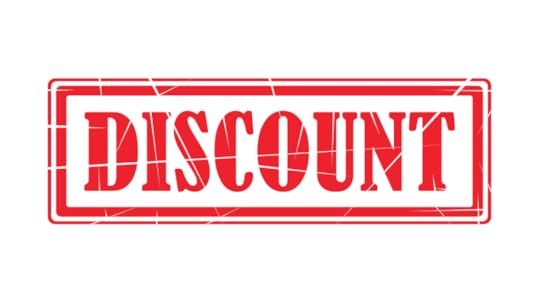
It is easy to blame the salespeople for rampant discounting but it has always been my experience that the primary responsibility for over-zealous discounting and the resulting price and margin erosion rests with management.
When a manager has a surplus, whether of inventory or of salespeople not hitting their numbers (meaning that he or she isn’t hitting their number either), they look for a solution in the form of a discount. Approach the end of the month or quarter with too much inventory on the shelves or too many people not hitting their quota, and the first thing many managers do is authorize their salespeople to offer a discount to a customer to win an order and move some product.
All parties involved in a sales transaction, buyer and seller, are familiar with this cause and effect scenario. Salespeople wait for it. Customers wait for it. It is not an accident that the trajectory of orders during a quarter traces the familiar hockey stick shape. Everyone is familiar with the rules and is in on the game.
The problem with this end of period discounting is that these “one-time” discounts have a tendency to morph into the new default price point for your customer. If you’re handing out discounts at the end of a quarter to induce customers to close an order or accelerate a delivery, then your next order from that customer is going to be at the new price point you established with the discount. Balk at that and you’ll find that all your orders from customers will start to materialize around the end of your accounting periods.
Surplus is also a key factor in discounting conducted by salespeople. It occurs because salespeople oversell their product or service, in effect offering more features than what the prospect needs to meet their needs. This overselling occurs when salespeople are not adept at precisely qualifying their prospect’s exact requirements. A salesperson can’t sell value if they don’t understand the problem the customer is trying to solve. As a consequence, they tend to sell the entire feature set of their product or service in the hope of encompassing the prospect’s needs in the process.
When a salesperson’s offer exceeds the needs of the customer they are left with the choice of reducing either the scope of their offer or their price in an attempt to win the order. Offering surplus features that are without value to the customer almost always leads to a discount.
As a manager, to effectively address this discounting problem you need to develop a plan to reduce the surplus factors in your selling. First, the answer for salespeople who oversell is ongoing in-depth product training. Learning to sell value is next to impossible without a true understanding of your product or service. A rule of thumb is that a salesperson can’t effectively sell value if they don’t understand their product better than the prospect. Does your training accomplish that?
The second surplus factor to manage is the end-of-quarter discounting syndrome. This is a hard habit for management to break. Unfortunately going cold-turkey is the only effective method to curtail the practice. It could take one or two challenging quarters to flush the temptation out of your system and re-train your salespeople, prospects and customers. However, you will learn which customers are buying your product for the value versus the discount. These are the customers to focus on in the future.
The post The Secret To Foolproof Prospect Qualification appeared first on Andy Paul.
December 4, 2019
Are You Telling Customers You Just Don’t Care?

Your sales enemy is time. Not your prospects. Three stories about telling prospects their time isn’t valuable to you.Creating a good first perception with your prospects. Make sure all customer phone calls are answered by a live person.
Your Enemy is Time. Not Your Prospects.
What is the one valuable commodity
that is in short supply for both your prospect and you, the seller? It is time.
If you’ve read any of my work you know that your prospects are making economic decisions on how to efficiently allocate their limited time, and attention, among the many demands that are placed on it. In this excerpt from my book, Zero-Time Selling: 10 Essential Steps to Accelerate Every Company’s Sales, I discussed the concept of a Return on Time Invested (ROTI) and its importance in selling:
“A sell/buy transaction is essentially an investment opportunity for both the customer and the seller. For each party to do its job well, both have to invest a certain amount of time (which we all know is money), as well as money. Both the customer and the seller want to maximize their Return on Time Invested (ROTI) in their respective buying and selling cycles.
For the buyer this means making an informed decision to purchase a solution that meets their value, budget, and feature requirements with the least investment of time possible.
For the seller this means supporting the buyer with the information they need to make the optimum informed purchase decision in the shortest period of time possible.”
If you make good use of the time a
prospect invests in you as a seller; if the prospects realizes value and a good
return on the time they invest in you, then you will be rewarded with more
time, and have the inside track to win the order.
The concept is so simple and yet it seems that every day I encounter examples of bad sales service that needlessly waste a prospect’s time. At the same time, the sellers appear to be completely clueless about the negative consequences of their actions, and as you will see below, even celebrate their poor sales service. Here are a few quick stories to illustrate the point.
Story 1
I returned home from a vacation to find that a prolonged drought had driven several million thirsty ants to relocate from my backyard into my kitchen in search of water. They were marching in thick black lines from one end of the white tile floors in my kitchen to the other. I needed help and immediately hopped online to find a local exterminator. The first company listed on the Google search returns, which I’ll call Ant-Away Exterminating, claimed they had an organic, technologically advanced solution for exterminating pests that was safe for people and pets. Perfect! Riley and Nico, my golden retriever and exuberant poodle-type mutt, would appreciate that. Plant friendly, pet friendly (unless your pets are insects…), people friendly, environmentally friendly, and absolutely lethal to bugs of all stripes. What more could be better?
Ant-Away published a number for
their 24-hour hotline on their website. Twenty-four hours a day. Wow, good
service! Help when I needed it. I was ready to buy. I dialed their hotline
number which offered up a recording that invited me to leave a message for one
of their customer service technicians. Then the exuberant female voice on the
recording proudly trumpeted “our company policy: your phone call will be
returned within 24 hours. Guaranteed!”
Twenty-four hours. They thought
that was fast. But their fast was my slow. I had ants all over my house and I
didn’t have 24 hours to wait for them. I needed to take care of the problem
now.
Ant-Away had the perfect
opportunity to capture my business. But, like a lot of companies, they prized
their convenience over being responsive to their customers. And they had the
chutzpah to attempt to turn their shortcomings into a virtue. Instead, what
they communicated to me, and all their other prospective customers, were three
negative messages:
Your call is not that important to us. In fact, you are not going to talk with a salesperson or customer service rep when you call. In fact, you won’t even speak to a live person at all.
The only guarantee we can offer is that we won’t call you back until tomorrow. What’s the rush? We’ve given ourselves 24 hours!
We need to have a company policy in place to force someone to call you back at all.
I called the next pest-control company on the search returns.They actually answered their phones with a live operator and set me up with a same-day appointment with their technician. Within a few hours the ants had been persuaded to quench their thirst outdoors.
Story 2
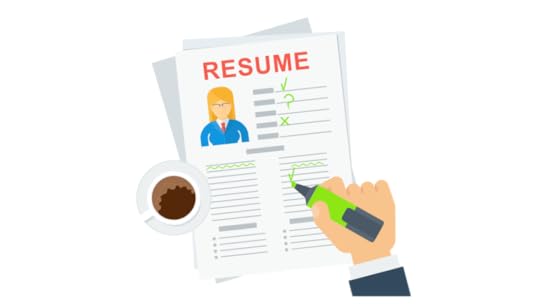
A client was going through a growth spurt and was hiring a lot of people. They were inundated with resumes being submitted online so the CEO, Dennis, decided to invest in a software system to track resumes and applicants. He spent an entire weekend researching the various software options that were available to him and narrowed his options down to three companies. He sent each a detailed email to each firm with his requirements, reinforced the urgency of his situation and asked that he be called ASAP. Two weeks passed before he received the first response from any of the 3 vendors.
The salesperson seemed a little confused when Dennis informed him that he was going to stick with his current system for the time being. Hadn’t Dennis just sent his company an email stating he needed their solution? Dennis said he had but he figured that if it took two weeks just respond to his sales lead how much would he have to invest to go through the whole sales process? He couldn’t wait so he had figured out a way to cope with the volume of resumes they were receiving with his existing manual system. Six months later Dennis invested in a solution to manage and track applicants. None of the three vendors he had originally contacted were given the chance to bid on his business.
Story 3
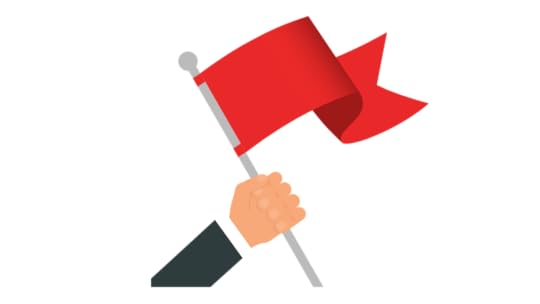
Recently I needed to purchase a particular software solution for my company. I invested several hours researching the alternatives. I spent more hours setting up accounts to try free trial versions of the applications. Over the course of several weeks I narrowed my choices to one application from a California-based B2B SaaS company that appeared to best fit my needs. I’ll call them AAATech. However, after using their application for a couple of weeks, I still needed some answers to a few specific questions before I could make my final decision. I couldn’t find the necessary information on AAATech’s website. I needed to talk to a salesperson.
I tried to locate a phone number on
AAATech’s website so I could call to speak to a salesperson. But they didn’t
offer one. In fact, they didn’t publish a single phone number anywhere on their
website. That was the first red flag. However, I was undaunted because I had
already invested hours of my time and invested a more time to track down an
email address for their Sales department. I submitted a list of five very
specific questions. Within an hour I received an email response. I was
encouraged. Taking an hour to follow-up a lead isn’t what I call great
responsiveness but it was certainly better than most companies. I enjoy doing
business with like-minded companies. But, then I read the response.
Dear Andy,
Thank you for your interest in AAATech. We are here to help you. Please let me know if you have any questions.
Regards,
Michael
Seriously? I invested the time to
pre-educate myself about AAATech’s products. I invested the time to write a
detailed email about my requirements and send it to sales@AAATech.com. And, in
return for my investment of time and effort, I was thrown into a lead nurturing
queue and sent a general auto-responder email that was somehow supposed to lure
me into their sales funnel. For me it was a negative return on the time I had
invested.
I bought from another
company. I am sure that many other prospects have also.
Are You Telling Prospects You Just Don’t Care?
Take a Simple Step to Create a Good First Perception
It is essential to have all incoming phone calls to your sales
and service teams answered by live persons rather than auto-attendants.
Providing a personal sales experience for your customers is an important
element in winning orders. This is especially true for small- to mid-sized
firms competing against larger companies. Integrating a human touch into your
sales and customer service processes directly affects how your prospects and
customers perceive and engage with your company. And, in turn, has an impact on
your sales and profits.
Doing something as simple as providing a potential customer with a live person to answer their questions is a key sales differentiator. As my mother, and countless other mothers throughout the years, have always stressed, “You only have one chance to make a good first impression.” However, it is not about the first impression, but the first perception you create in the mind of the customer. Impressions are fleeting but perceptions are reality and it is very difficult to change a prospect’s or customer’s perception of your company and offering once it has been formed.
Having your company’s phone answered by a voice recording is not the way to create that good perception. In fact, you are communicating just the opposite message to your prospect and customer: “Your phone call was not important enough for us to actually answer it.” This is even truer for SMBs. Customers expect big companies to be faceless, impersonal and slow. For the SMB, this initial contact with a prospect is a golden opportunity to differentiate you from the competition and create a positive perception in the mind of the customer about your responsiveness and follow-through.
Only bad things happen when a live person does not answer calls
to sales.

1. The odds of any lead ever being followed-up are slim.
If you force prospective customers to leave a voice mail for
sales you are giving them a pretty reliable indicator of the likelihood of the
call being returned. Industry research estimates that anywhere from 30-50% of
sales leads are never followed up. Even if the number is only 30% that quantity
of lost sales opportunities is astounding. Factor into that the odds of a
salesperson returning a call to a lead that left a voicemail and the chances of
that lead ever receiving a response from your company are pretty dismal.
2. The prospect has a negative perception of your
responsiveness.
The key to sales differentiation today is responsiveness. A
study cited in the Harvard
Business Review estimated that you were 7
times more likely to convert a lead into a qualified prospect if you followed
up within the first hour. Now think about what happens to prospect calls that
get routed to voicemail. If the call is ever returned it will be hours, if not
days, later. (See #3 below for what happens then.) Many SMBs have a sales
voicemail box that gets checked about once a day. I had a client that checked
their sales voicemail box only once per week. (That changed in a hurry.) Why
would you knowingly put in place a sales process that is guaranteed to send a
message to your prospect that you don’t share their sense of urgency?
3. You open the door to your competitors
What happens when prospects call your company with an inquiry
and are forced to leave a voicemail? They dial the number of the next seller on
their list. If they talk to a live salesperson that is responsive and able to
provide answers to their questions in zero-time, then you are suddenly in
staring at 2nd place in the competition. By the time your salesperson responds,
the customer may have moved a substantial way down the road to buying from
someone else.
I once came home from vacation to find a river of ants streaming
across my white tile floor from one end of the house to the other. I searched
for pest control online and chose the brand-name company on the top of the
returns to call first. I got a voice mail in their sales department telling me
that my call was so important to them that they had a company policy that
guaranteed it would be returned within the first 24 hours! They were so proud
of this. I thought was “Wow. Your fast is my slow. I’m calling the next guys.”
The next guys answered their phone and had someone out the same day to escort
the ants off the property.
4. The prospect doubts your commitment to support them.
Think about it this way. Do you really think you are providing
the best sales service (or customer service) when you force customers to leave
voice mails rather than talk to your salespeople? Is that what you prefer when
you call a company for information about their products or services? Would you
rather have to deal with an auto-attendant and hunt and peck through a dial by
last name directory instead of talking to a live person? Of course not. You hate
it. We all do. And yet, so many of you that hate it, continue to use it in your
own business as the first line of communications with your prospects and
customers.
Remember that every interaction with a prospect has a zero-sum outcome. It is either a winning interaction or a losing interaction. You either provided value to the prospect or you wasted their time. Every time you communicate with the prospect you are being evaluated and compared with your competition. Squander the first contact you have with a new prospect by not enabling them talk to a live sales person and see how long it takes for your competition to win that business.
The post Are You Telling Customers You Just Don’t Care? appeared first on Andy Paul.
December 3, 2019
Avoiding Sales Management Pitfalls That Slow Down Orders
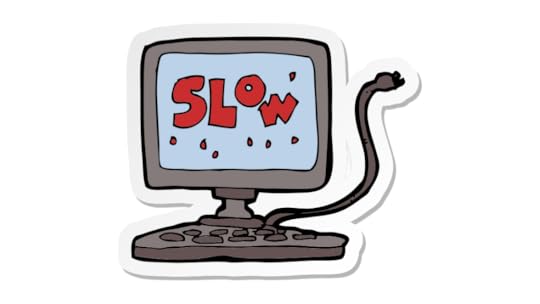
 Why S-L-O-W sales processes are primary cause of missing quota.
Why S-L-O-W sales processes are primary cause of missing quota.
 Three steps to change: (a) make a change, (b) create a metric, and (c) be accountable
Three steps to change: (a) make a change, (b) create a metric, and (c) be accountable
 If you’re a sales manager, your first responsibility and highest priority is day-to-day coaching of your salespeople.
If you’re a sales manager, your first responsibility and highest priority is day-to-day coaching of your salespeople.
 Avoid these 5 common missteps of sales managers.
Avoid these 5 common missteps of sales managers.
Why Are You So S-L-O-W?
Why are your sales so slow? I’m not
referring to your order rate. I am talking about the activities and processes
that have to be happening in Zero-Time in order for you to achieve your sales
goals. One thing leads to another and if you are running in place in February,
you’ll be running to catch up by March and hopelessly behind by June.
Here we are, still near the
beginning of a new year, when hopes for the next twelve months should be
running high. And your selling efforts feel like they are stuck in the thick
mud. Just like they were last year. This is not the way to kick off what should
be your most successful sales year ever.
Everyone has a reason or an excuse
for slow selling. Believe me, we have all been in a situation where you
question your sales manager about why it is taking so long to move a customer
along in their buying cycle, and they don’t have an answer that makes sense. Or
any answer at all.
I ask all my new clients to
identify the reason, or reasons, why they are not growing, why their sales
efforts are stuck in neutral. The responses I receive are typically all of a
piece. As CEOs they can identify the symptoms but not the causes of the
problem. But as CEOs and sales managers of SMBs you can’t be a doctor who can
only diagnose the symptoms of the illness without prescribing a cure.
I group the symptoms of sales
lethargy into the S-L-O-W acronym.
S is for Status Quo.
Too many companies are just
coasting along. The CEOs are not really satisfied with their results but they
are too worried about making any changes that could rock the boat and
potentially jeopardize the sales they do manage to capture. Maintaining the
status quo is not a way to thrive.
“Status
Quo is ancient Greek for ‘slow death.'”
Folks, say hi to Milt again. (To
learn more about Milt, check out my book, Zero-Time Selling,
or this previous blog post. )
“Hey.”
Actually, Milt, Status Quo is not
Greek. It is Latin for “the current state of affairs.” But when an
SMB’s sales are stuck, maintaining the status quo is the same as slowly dying.
“As
I said.”
L is for Lack of Urgency.
In today’s economy you can’t expect
the customer to operate on your schedule. The timeframe for every sales action
has to be immediate. Customers do a lot of online research on your product
before they ever call you and when they do they are single-mindedly looking for
answers to their questions. The first seller with the complete answers wins.
O is for Outdated sales practices.
Unfortunately, many SMBs still
operate their sales teams like it is 1912 not 2012. Their only concessions to
the 21st century are a website and email.
“What
would you call my pager?”
Google d-i-n-o-s-a-u-r.
Your customer and their buying
behavior have been irrevocably altered by technology over the past 15-20 years.
And if your sales practices and sales methods haven’t changed in concert with
your customer then you can’t expect to effectively compete for their business
against competitors who have evolved.
“Google
N-E-A-N-D-E-R-T-H-A-L?”
W is for Weak sales management.
I don’t like to point fingers.
“But
you will.”
SLOW starts at the top.
Even a highly self-motivated sales
person will find it hard to succeed in company where the status quo rules,
where everyone’s motor revs at a slower idle and where the sales systems and
processes were obsolete before the turn of the century. A successful sales
culture begins and ends with management. The CEO and sales management have to
commit to change and urgency.
3 Steps To Change
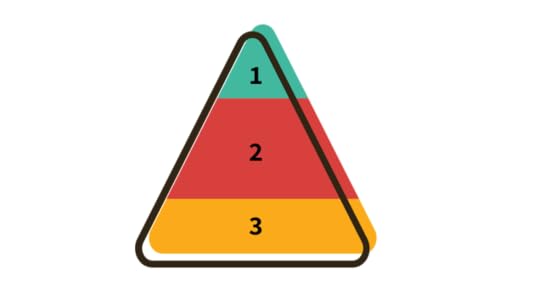
Now, as you move further from the old sales year and deeper into the new sales year, now is the time to evaluate what you can do to shake things up, to change the routines your sales team have followed year after year. Break some of your bad old habits and reach a level of sales success that you haven’t achieved before.
Here are THREE tips you can put to use today. These are not permanent fixes. Or suggestions for how to comprehensively revamp your sales efforts. There are just small ideas you can put to use TODAY that can begin to make a difference and break you out of the SLOW mold. It doesn’t matter which one you choose. Just choose one of the following steps and put it into play.
Make One Change Today.
Take a close look at your sales
routines; your sales processes. Tell each of your salespeople to choose just
one customer facing activity and change it. Now. Don’t just pay lip service to
change. Do something about it. This is not a change that requires a committee
to plan and implement. I’m advocating something much more simple than that.
Just choose one aspect of your day-to-day sales activity and change it. Simple.
Create a Metric.
Every aspect of your sales process
is measurable. Do you have metrics for each step of your selling process? Are
you measuring how long it takes to respond to your sales leads? Or how long it
takes you to write a quote and deliver it to a prospect or customer? Choose a
single aspect of one sales process and assign a metric to it. Then measure it
today and again tomorrow.
Be Accountable.
Tell someone about the change you made or the metric you’re tracking. Tell a colleague that you have undertaken to make a change in your sales routine. Tell your boss which part of your sales process you have begun to measure and what the goal is. When you tell someone else that you are making a change they will be interested to learn if it is helping you. As a result they will ask you how it is going. And you will need to have an answer for them. Being accountable for change is a big motivator.
If You’re Not Coaching, What Are You Doing?
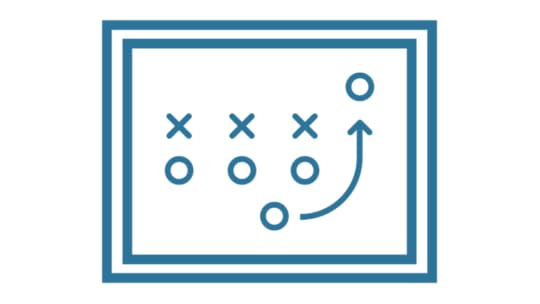
What’s Your #1 Priority?
If you’re a sales manager and your
number one priority each and every day is something other than coaching the
individuals on your sales team to improve their sales productivity then what
are you doing? Whatever it is, put it on hold and take care of your priorities.
The term coaching is in vogue these
days. Much has been written about the importance of sales managers becoming
coaches for their team. Studies have been cited that claim that it is the
single most important thing you can do. A commonly cited statistic is that a
19% improvement in sales productivity is to be expected with effective
coaching. To which my response is an old-fashioned “Duh.”
The fact is that coaching is
nothing more than disciplined sales management. There is no distinction between
the two. I attended a conference recently where consultants talked about how
they were hired to coach front line sales reps in companies with sales managers
in place. The claim was that sales managers had too many other responsibilities
and no time to coach their direct reports. I don’t buy it.
If you’re a CEO, there should only
be two reasons why a 3rd party consultant should be providing coaching to your
frontline sales team:
Your sales managers are inexperienced and don’t know how to effectively coach. That is okay. New sales managers need to be trained. They don’t arrive in their first sales management assignment fully formed and ready to effectively function as a manager any more than newborn babies are born ready to memorize and recite Shakespeare. But, if this is the case, then train your sales managers. If can’t do it yourself, then hire that consultant to coach your manager, but never your sales team. Teach your managers how to be effective sales coaches. And, if they are unable to do that then…
Your sales managers are in the wrong job. You need to find someone new who is capable of performing the hard work that comes with being an effective sales manager.
What should a sales manager do to be an effective coach?
A. Make certain that each member of your team fully understands the playbook.
In this instance the playbook means
the sales team is thoroughly trained to know the answers to the
“what” and “how” questions. What are they selling and how
are they selling it? Sales reps need training in the sales processes you use as
much as in the products you sell.
B. Work with each member of your the team to develop an individualized sales plan.
The sales plan is simply composed
of the objectives, strategies and tactics that the individual sales rep is
going to employ to achieve their assigned goals. People gravitate towards sales
as a career because it gives them a sense of being in control of their own
destiny. But they aren’t going to find their destiny without a road map. The
effective coach makes sure their reps understand what each day, week and month
holds in store.
C.
Set expectations not only by your words, but also by your actions.
This is not about achieving the
number but about the process and what it takes to mold someone into a high-functioning,
self-sufficient salesperson. Sales is a craft. Learning how to successfully do
it is an apprenticeship. The most successful salespeople I know learned their
trade by watching their managers at work and integrating the skills and
techniques they observed into their own daily selling routines. An effective
coach has to be able to demonstrate the skills they are teaching.
D.
Get down into the nitty-gritty.
This means conducting regular
detailed reviews of every deal your reps are working, supplying the strategic
and tactical coaching to move deals along, as well as providing the wisdom,
guidance and counsel a rep needs to motivate them to persevere when the going
gets tough. It means understanding the details of your teams’ deal so you can
provide day-to-day guidance to ensure that opportunities are continuing to move
forward.
E.
Develop a strong level of trust with your team members.
How does that trust get
established? By being openly invested in each rep’s success to the same degree
that they are. This is a tough standard for sales managers to meet. But the
great sales managers are all able to make it happen. Read interviews with
players from great sports teams that have won championships and the common
attribute they cite for their success is the high-level of trust that the
teammates had in each other. In short, they had each other’s back. Have your
team’s back.
My first sales manager was Ray. Ray
was the most no-nonsense manager I have ever encountered. (My hiring interview
with Ray lasted 2 minutes and he said all of 12 words. But that is a story for
another day.) It was primarily through his coaching that how I first learned
how to sell (and be a sales manager.) Everyday we sat down and reviewed each of
the deals I was working on. He taught me how important it was to not waste a
minute, hour or a day if I was stuck on a deal and needed advice to see what I
needed to do next. I remember coming into the office one morning when I was in
the midst of a month-long sales slump and Ray was standing by his desk with his
jacket on and car keys to his big red Oldsmobile jangling in his hand.
“C’mon,” he said. Let’s go make some calls.” We’d spend the
morning talking to prospects. Sometimes I’d take the lead and sometimes Ray
would take the lead. But I would always come back from those calls smarter
about selling and motivated to knock it out of the park.
Being an effective coach means nurturing the success of the people who work for you. At the end of the day, that is the highest success a sales manager can achieve. If you’re a sales manager, and you’re not coaching, what the heck are you doing?
5 Common Missteps of Sales Managers

A sales manager at the helm of a sales team has the
responsibility not only to manage the definition and implementation of
effective sales processes but must also provide the leadership and coaching his
or her sales team requires to effectively utilize the sales processes to
achieve and exceed their goals. This blend of strategic and tactical skills is
not easy to achieve. Sales Managers often are more comfortable with one aspect
of their sales process leaving them to neglect others. That is human nature.
Being aware of the five classic pitfalls nearly all sales
managers experience at one time or another will help you avoid unnecessary
setbacks and smooth your path to sales growth.
1. Protecting the Status Quo
As important as a sales process is, a slavish adherence to the
status quo is the first step on the road to failure. Generally, as a sales team
is developing, a great deal of attention is focused on creating the structure
for sales activity and sales growth. Managers make the mistake of assuming that
once their sales process is in place that they can solely focus their efforts
on tactical sales management. The problem is that elements of your sales
process may not be a perfect match for your target market or for the
individuals you have on your sales team. As a sales manager you must pay
constant attention to your sales process to ensure that it is always supporting
and not impeding, your sales efforts and take immediate steps to revitalize it
when it has become outdated or stale.
2. Losing the Urgency
A second pitfall sales managers have to confront is losing their
sense of urgency. This is not to say they become complacent. Rather they don’t
act and manage with the requisite responsiveness. Prospects and customers have
questions and want answers in Zero-Time in order to make informed purchase
decisions in the shortest time possible. Neglecting to reinforce this urgency
within your sales process and your sales team will inevitably lead to a
decrease in responsiveness and, ultimately, orders. In sales, everything is
urgent or needs to be. As a sales manager, if you aren’t maintaining this
attitude of immediacy in all that you do, you risk failure.
3. Failing to Measure
Neglecting to establish metrics for key processes and
overlooking the necessity of regularly measuring how the processes are
performing is a common oversight that negatively affects sales productivity. A
sales process is not an abstract concept but a discrete set of required steps
to achieve a certain goal within a certain period of time. As a sales manager
you must continuously measure the outcomes of your core sales processes and
take the necessary steps to refine them and make them even more productive.
4. Providing Incomplete Training
Sales managers often fall into the habit of providing limited
training for their sales team. They focus on isolated skills and product
training to the exclusion of integrated sales training that teaches how to
deploy their skills and knowledge within their sales processes to win customer
orders. Sales people have to be trained on their processes as deeply as on
their sales skills and product knowledge. Ignoring this training is akin to
putting 11 football players on the playing field and telling them to just
improvise plays and do whatever they please.
5. Swimming with Minnows
Too many sales managers keep chronically underperforming sales
people onboard well past their expiration date. You don’t want to keep swimming
with minnows when you need to be cruising with orcas to make your numbers. If
you have salespeople who aren’t suited to sell your product or service then
every minute you keep them is a minute too long. It is a myth that good
salespeople can sell anything. To ensure the growth of your company,
salespeople must have experience and skills that will enable them to be
completely responsive to the information requirements of their prospects in
Zero-Time. If they don’t, they must go. Period.
It has never been easy to be a sales manager. However, if you
can avoid these common missteps then you, your team, and your company will all
benefit.
The post Avoiding Sales Management Pitfalls That Slow Down Orders appeared first on Andy Paul.
December 2, 2019
Cold Calling

There is a lot of talking and blogging going on about cold calling and whether it is a necessary or even desired part of the sales mix. I can’t resist putting in my two cents on this discussion.
I have recently seen a couple of studies and listened to some
presentations about the changes taking place in how sellers and buyers are
interacting that are worth considering as we leap into the fray. In general,
the trends discussed are reflected in the 2010 DemandGen
and Genius.com study titled “Inside the Mind of
the B2B Buyer.”One of their key findings was that more than 80% of B2B
customers/buyers said that on their transactions that they had initiated
contact with the seller. Only 10% said that they were contacted cold by the
seller.
Personally I’m not convinced that the 80%, is an accurate
reflection of the sales situation today. But that is really beside the point.
The key takeaway is that it is an indicator of how your customer’s perception
of the role of sellers has changed and how the actual role of sales is
continuing to evolve at a rapid pace. The Internet and social media have
irrevocably transformed how conversations with some significant fraction of
your prospects are initiated. And, even if you, as a seller, initiate contact
with a prospect, chances are high they are going to possess some level of
pre-education and pre-qualification on your product and service on that first
call (or they are going to acquire it by browsing your website while on the
phone with you.)
What does this mean for cold calling? In an ideal world, cold
calling wouldn’t be necessary. In our fantasy, marketing departments would
prove capable of generating well-targeted (or “sales worthy” to
borrow a term from my friend Nancy Nardin) in-bound sales leads in such
large quantities, week after week, month after month, that all available sales
time would be consumed with responsive follow-up. Wouldn’t it be great if the
world were handed to you on a silver platter like that?
Unfortunately, that dreamy ideal world doesn’t exist for most
companies. Using the figure from above as an example, even if you meet 80% of
your sales goal today from prospects that originated as sales worthy in-bound
sales leads, where will you find the remaining 20%? You will find them from
proactive prospecting (i.e., cold calling.)
If you’re in Sales your job boils down to this: doing the hard
work required to meet your goals. Whenever there is a gap between in your pipeline
between the number of qualified prospect your need to meet reliably meet your
goal and the number of qualified prospects in your pipeline generated from
in-bound sales lead conversions, and there will almost always be one, it has to
be filled in by prospect activity generated by you. This means fulfilling your
responsibility as a salesperson to do what you have to do in order to meet and
exceed your assigned goal. If this means spending a portion of every day
following a disciplined prospecting process (i.e., doing some research to pick
targets, making connections online, getting on the phone or going out and
making calls) then that is what has to be done.
In my first professional sales job out of college, in the
pre-Internet dark ages, I was selling big computers. Everyday involved getting
kicked out of the office at 8am and venturing out to make cold calls out in my
territory. I have to admit it didn’t come naturally to me. So I developed
another approach. I hit upon a system of hosting a seminar in our branch office
every Wednesday afternoon at 4pm during which I would demonstrate our system. I
used business directories to research names of potential prospects in my
territory and mailed out 10 postcards with a hand-written invitation every
Thursday. I’d follow up with everyone on the following Monday morning and again
on the morning of the seminar. Usually I’d end up with one or two attendees
each week. Within months I had a strong, constantly renewing pipeline and was
killing my numbers. After a couple years, I was getting two thirds of my
business from existing accounts and referrals. But every Thursday, I was still
sending out 10 postcards and every Wednesday I was playing host to new
prospects.
No matter how many leads you receive, cold calling, or proactive
prospecting, remains a necessity for most salespeople and most sales teams.
Clearly the amount of time a salesperson has to devote to cold calling could
shrink as increasing numbers of prospects pre-educate themselves online and
initiate connections with potential vendors. But the role sales prospecting
plays in building a strong pipeline of qualified prospects to ensure that you
make your numbers is will never go away completely.
Sometimes you just gotta do what you gotta do.
This is not a trick question.
Are you selling or is your customer buying? The answer is both.
There is both a sales cycle and buying cycle(s) occurring concurrently on every
deal. Understanding the balance between the two is essential for every seller.
Why is this important to you? Because the sole purpose of a
sales cycle is to support the buying cycle by helping the customer accomplish a
single task: making a fully informed decision to purchase the right product or
service for their needs. If you, as a seller can also, at the same time, enable
the customer to make that purchase decision in the shortest time possible then
you will have created value for the buyer, established credibility, built
trust, and put yourself at the head of the pack competing for their business.
The Balance of Power has Shifted
In the olden days, in the pre-Internet world, buyers of product,
your prospects, were completely dependent on sellers for information about the
products they wanted to buy. There were no websites to search and very few
reliable third-party sources of information about products that you could use
to guide your purchase decision. The result was a much more casually paced
buying cycle as the customer had few options to control the pace.
Then the Internet upended that whole cozy arrangement. Within a
matter of years the customer was no longer dependent on the seller for product
information. Brochures were replaced with websites that were usually full of
more information than even the salesperson knew. Online communities provided
users with a forum where they could voice their unvarnished opinions about
products and services to all who were interested. Buyers had access to a whole
spectrum of information that hadn’t existed before or that had been shielded
from them by the sellers. Suddenly, the buyer was in charge of his or her own
buying process.
Do Not Pass Go
There can be some debate about how many steps there are in a
customer’s buying cycle. Personally I believe that there are six steps in the
buying cycle. But no matter how many steps the prospect has to complete in
their buying cycle, one fact remains: a buyer won’t progress from the current
step in their buying cycle to next until their information requirements for the
current step are fully satisfied. This means that each step of a buying cycle
carries with it certain requirements for information that must be received by
the prospect before they will move forward to the next step.
Sellers Control the Pace of Deals
When sales cycles get stretched out salespeople always point
their fingers at the buyer. To them it is always the customer who’s the culprit
when the sales cycle stalls. In truth, the opposite is true. It is nearly
always the seller’s fault when the buyer stops making progress towards an
order. Why? Because the seller didn’t provide the prospect with the information
they needed to move on to the subsequent step in their buying process. If the
deal you are working on suddenly loses momentum, take a look in the mirror
before you begin pointing fingers at the customer. Then, you must quickly
determine what data the customer needs from you to satisfy their requirements
for the current step of their buying cycle and get back on track to an order.
We Are Not Alone
As a seller you must also understand that there is a good chance
that there will be more than one buying cycle occurring simultaneously. Your
prospect will have a separate buying process for every seller in a competitive
deal. This is extremely important for a seller to understand. If you can be
completely responsive to your prospect’s information requirements then you can
gain a competitive advantage over your competitors.
What the Successful Seller Does
The successful seller is the one that most closely aligns their
selling resources (i.e., their product knowledge and industry expertise) with
the buying needs (i.e., information requirements) of the customer to enable
them to make the optimum informed decision in the least time possible. This
means that you have to place your people with the deepest product knowledge and
industry expertise closest to the customer.
To help the prospect move through their buying cycle in the
shortest time you have to eliminate
the “get-backs”from your selling. Every
time a salesperson can’t answer a prospect’s question and says, “I’m sorry I’m
going to have to get back to you” he or she is slowing down the buying cycle.
Having the right salespeople on your team who can be completely responsive to
the prospect’s need for information and help them move through their buying
cycle in Zero-Time will definitely enable you to win more orders in less time.
The First Seller with the Answers Wins
A buying cycle is nothing more than a search for information in the form of answers to questions. How a seller conveys that information to the prospect will be the difference between getting an order and losing a customer.
The post Cold Calling appeared first on Andy Paul.
November 27, 2019
The Ultimate Guide to Building an Effective Sales Process

 Why process is paramount in selling.
Why process is paramount in selling.
 How effective processes are a means to enhance selling skills.
How effective processes are a means to enhance selling skills.
 How to identify and fix the bottlenecks in your sales processes.
How to identify and fix the bottlenecks in your sales processes.
 Why most sales systems are like diets and just as effective.
Why most sales systems are like diets and just as effective.
 6 simple steps to control your selling and compress buying cycles.
6 simple steps to control your selling and compress buying cycles.
Why Process is Paramount
This is one of the classic debates about sales and selling. It is very similar to the ‘nature vs. nurture’ debates that young adults without kids and too much time on their hands indulge in. (Anyone with kids quickly learns the answer to this…) The answer is that both process and skill are required to succeed in sales. However, process provides the platform for skills to flourish.
What Would Michael Do?
Take the case of an elite athlete
like Michael Phelps, the all-time Olympic champion swimmer. Michael Phelps
trains like a demon, spending hours face down in a pool every day, to showcase
his skills on the world’s biggest stage, the Olympics. He won an unprecedented
8 gold medals in swimming at the Beijing Games in 2008. There is no doubting
his obvious skills. Having conquered the world once, the question was would he
return to the London games in 2012 and try again?
In preparation for the Beijing Olympics, Michael followed the training regimen put together by his coach, Bob Bowman. It was a process that focused on the quality of the daily work Michael did in preparation for competition. Every workout he swam and the details of how he performed in that workout, every weightlifting session, every cross-training session were meticulously recorded, tracked and analyzed. Bowman and Phelps knew that the most accurate predictor of how Michael would perform in the big competitions was the data collected about his daily training process over the previous months and years.
The Day-to-Day Process
This is similar to selling. How you execute your sales process on a day-to-day basis is the most accurate predictor of whether you will win orders and meet your objectives. An effective and disciplined sales process can do for you what it does for Michael Phelps. If you work hard, it will put you in a position to compete for and win orders. It is how well you execute the basic sales activities that comprise the steps of your process, and how often, that will ultimately lead to the order.
As he began his initial
preparations for the London Olympics Phelps strayed from the process that had
led him to the podium eight times in Beijing. And, with all the skills in the
world, his results in competition suffered. He was losing to swimmers that
previously couldn’t compare to him. What did he do? He redoubled his commitment
to the process laid out by his coach. He might have rebelled against the
process but he returned to it because he knew that if he invested his hard work
into it results would follow.
If you listened to Michael Phelps
being interviewed after a pre-Olympic tune-up race before the London Olympics
he defaulted to talking about his process. The race result might have been a
first place finish but he all talked about how well his training was going. His
focus was on how he was performing each day in each step of his training
process. He knew that if he executed his process he’d put himself in the
position to achieve the results he expected.
In the same way sales process can
provide a much clearer snapshot of potential sales than simply looking at your
pipeline of prospects. Well-defined sales processes provide a method to
continually assess and measure the underlying sales activities that will lead
to orders. Using metrics to continually measure and fine-tune sales processes,
just as Bob Bowman did with Phelps’ training regimen, leads to improved
outcomes for salespeople of all skill levels.
Your Process Enhances Your Skills

I had a client where one of the
more senior salespeople, a grizzled sales professional, Ollie, was determined
to resist management’s efforts to implement some fundamental and essential
sales processes to respond to a changing sales environment. Ollie had always
managed his sales territory his own way and while he possessed great sales
skills and experience he was floundering. He found himself at odds with
evolving prospect and customer expectations for salespeople in terms of
responsiveness, follow-up, content delivery and service.
The processes that Ollie’s
management implemented saved his sales career by requiring Ollie to become more
responsive, more proactive and timely in follow-up, more knowledgeable of the
products he sold, more conscious of eliminating time-wasting sales calls and
making every customer interaction achieve the maximum impact in the least time
possible in order to compress buying cycles.
This does not mean that a salesperson should ignore the skill components of selling. We should always be working to improve our sales skills no matter how much experience we have. But sales skills need to be utilized in support of defined sales process to create the most value for the customer. And the salesperson.
Your Sales Can Only Be As Fast As Your Slowest Link. Do You Know Yours?
It is imperative for sellers in today’s fast-paced competitive
markets to focus on the speed of their selling to create value for their
customers, quickly build trust and credibility as well as truly differentiate
themselves from their competition.
Taking advantage of the treasure trove of information available
on the Internet your sales leads and prospects today are substantially
pre-educated about your products and services (as well as your competitors’)
when they are inserted into your sales funnel. The quantity of information your
prospects require at that point to make their purchase decision is
substantially smaller than if they entered your funnel at the top. Most
importantly, they have the expectation now, which is usually not met by the
seller, that they can obtain the information they need to make their purchase
decision in a shorter period of time than usual.
What Are Your Sales Bottlenecks?
“Efforts
to optimize work processes in order to more quickly respond to customers will
become increasingly important,
says (Lawrence Byrd), an Avaya executive, who points to a widening gap in customer
loyalty where the younger generation is typically more fickle and bombarded
with choices.”
But maximizing responsiveness can only be achieved with
effective sales processes that are continually measured, analyzed and improved.
This is called Selling with Maximum Impact in the Least Time. If you are
Selling with Maximum Impact then your sales objective is to empower your
prospects and customers with the information they need to compress their buying
cycles.
“Noting that businesses are only as fast as their slowest
link, (Lawrence) Byrd, director of collaboration solutions at Avaya, said it
was important for organizations to look at how they can speed up their business
because ‘speed depends on the slowest link’, he said. ‘It’s no point having a
car as fast as a Ferrari, if your tires are flat. What’s key is to fix the
bottlenecks,’ Byrd said.”
Are Your Sales Processes Optimized?
What is the slowest link in your sales process? Do you know? Or
are you just guessing?
Ask yourself some of the following questions:
Do you have a written sales process for sales lead follow-up? (Our surveys show that fewer than 20% of sales teams do.)
Do you have a flowchart that shows how many sets of hands a sales lead passes through before it is placed in the hands of a salesperson who will follow-up with a phone call? (Same as above.)
How long does it take, on average, to follow-up on a sales lead from the time it is received until a knowledgable salesperson talks to the prospect? (It takes longer than you are guessing.)
Is the person who follows up on your sales leads A) an entry-level person (like the now ubiquitous Business Development Rep (BDR)) or B) a salesperson who really understands your products, services and customers? (Hint: A is not the right answer. Any sales interaction that does not create value for the customer is a waste of their time and yours; i.e., a bottleneck.)
Do you have a written sales policy manual that includes definitions and descriptions of all of your core sales processes? (Our assessments show that only 17% of company’s have taken this step. Ignorance is bliss I guess.)
Do you have established responsiveness metrics for your company’s core sales processes? (No? Then how do you know if they are optimized?)
How often are your critical sales processes and their associated responsiveness metrics analyzed, evaluated and improved? (Our assessments show that 50% of companies never review their sales processes. Every company has sales bottlenecks. Most just choose to ignore them.)
If you don’t have satisfactory answers for each of these
questions then it’s a guarantee that your sales processes are not optimized.
And, most importantly, you are leaving valuable revenue opportunities on the
table.
Keeping The Wait Off: Why Most Sales Systems are Like Diets and Just About as Effective.
Most sales systems are like diets. And, for the most part, just
as effective. Which means they aren’t. If diets or sales systems really worked
as advertised, if you were able to sustain your weight loss, or consistently
sustain your sales growth, you probably wouldn’t be reading this article.
Just like dieters who jump from one new exotic diet plan to the
next in the hope that the next one will produce better results, so too are
sales managers guilty of skipping from one new sales methodology to another
hoping to find some magical solution to their team’s anemic sales performance.
Much as dieter’s are concerned about losing pounds and keeping
the weight off, sellers should be focused on eliminating wasted time from their
sales process and keeping the wait off their selling.
These days prospects substantially pre-educate themselves about
a product or service before they ever engage with a seller. Rarely are they
entering the funnel at the top but further toward the bottom. They have already
invested time in their buying process and when they finally engage with the
seller, they have fewer questions to be answered and a greater sense of urgency
to make a decision. The trouble I have seen with many sales systems that
managers implement is that they weigh down a sales force with unnecessary
process and methods that result in extra time being injected into their selling
process. For your prospects and customers, this is putting on the wait (and
opens the door to your competitors.)
Ultimately, with dieting, the best results are found with people
who focus on the basics. Consume fewer calories and exercise more. The great
value of this prescription is that it is simple, straightforward and memorable.
It doesn’t rely on complex food preparations, expensive purchased diet meals,
or other stratagems. It takes will power and determination, two factors under
your direct control.
Similarly with selling, you will succeed in transforming the shape of your sales results straightforward focus on integrating higher levels of responsiveness, information content and speed into every step of your selling. You’ll compress buying cycles and win more orders by eliminating the wasted time that clutters up your selling; which means keeping the wait off.
6 Simple Steps to Take Control of Your Selling and Compress Buying Cycles (or How to Engage in a Healthy Sales Lifestyle)
1. Sell with Maximum Impact in the
Least Time (MILT)
Selling with MILT means that every interaction with a prospect
or customer has to achieve the Maximum Impact in the Least Time (MILT)
possible. This means integrating a high level of responsiveness, information
content and speed into every step of your selling process and eliminating the
useless customer interactions that waste your prospect’s time and provide no
value to them, or to you.
2. Immediately Follow-up All Sales
Leads
There is no easier way to grow sales than to immediately
follow-up on 100% of your sales leads. The math is simple. Assume that your
conversion rate of leads into sales is 2%. And let’s also assume that you only
follow up 50% of your sales leads. If you keep your conversion rate at 2% but
follow-up 75% of your sales leads, what happens to your sales? What if you
followed up 100%? In addition, studies show that you are 100 times more likely
to contact a lead if you follow-up within 5 minutes vs. 30 minutes of receiving
the inquiry. What are you waiting for?
3. Always Sell with the Sharp End
of the Stick
Selling with the Sharp End means putting your people with the
deepest product knowledge and industry experience closest to the point of
attack, meaning closest to the customer. Make it fast and easy for your
prospects to get the information they need to make a decision.
4. Do Everything Now
The timeframe for every sales action is immediate. In today’s
world, potential buyers have gone online and gathered more than 50% of the
information they need to make a buying decision before they engage with you for
the first time. When they do, their need for information is urgent. And the
first seller with the answers wins.
5. Answer Your Phones
Your prospects have questions and the first seller with the
answers wins. And voice mail can’t answer a question. Stop living in the dark
ages with an auto-attendant answering your phones. It is the 21st century and
that means that you need to answer your sales and support lines with live
people. Provide the Human Touch to your customers and watch your orders grow.
6. Disqualify the Losers
Proactively disqualify all the prospects who are not a good fit
for your services or who are not going to make a buying decision. They are
wasting your selling time and that time is the most limited sales resource you
have. Get rid of them.
Are you ready to lose the wait?
The post The Ultimate Guide to Building an Effective Sales Process appeared first on Andy Paul.
Andy Paul's Blog
- Andy Paul's profile
- 4 followers



